If you're a wholesaler, retailer, or brand owner in the stainless steel water bottle industry, understanding the manufacturing process is essential for making informed decisions.
Whether you're sourcing for your store, launching a private label brand, looking for a cooperate gift or scaling an existing business, knowing how stainless steel water bottles are made helps you choose the right suppliers/manufacturers, ensure product quality, and optimize your purchasing strategy.

At Sibottle, we specialize in manufacturing and wholesaling high-quality, customizable stainless steel water bottles, tumblers, and coffee mugs. With over 14 years of experience, we provide low MOQ (starting from 500 pieces), competitive pricing, and fast production turnaround—making it easier for businesses of all sizes to bring their products to market. Our SEDEX, BSCI, and ISO9001-certified factory ensures strict quality control, eco-friendly manufacturing, and a seamless customization process, from material selection to branding and packaging.
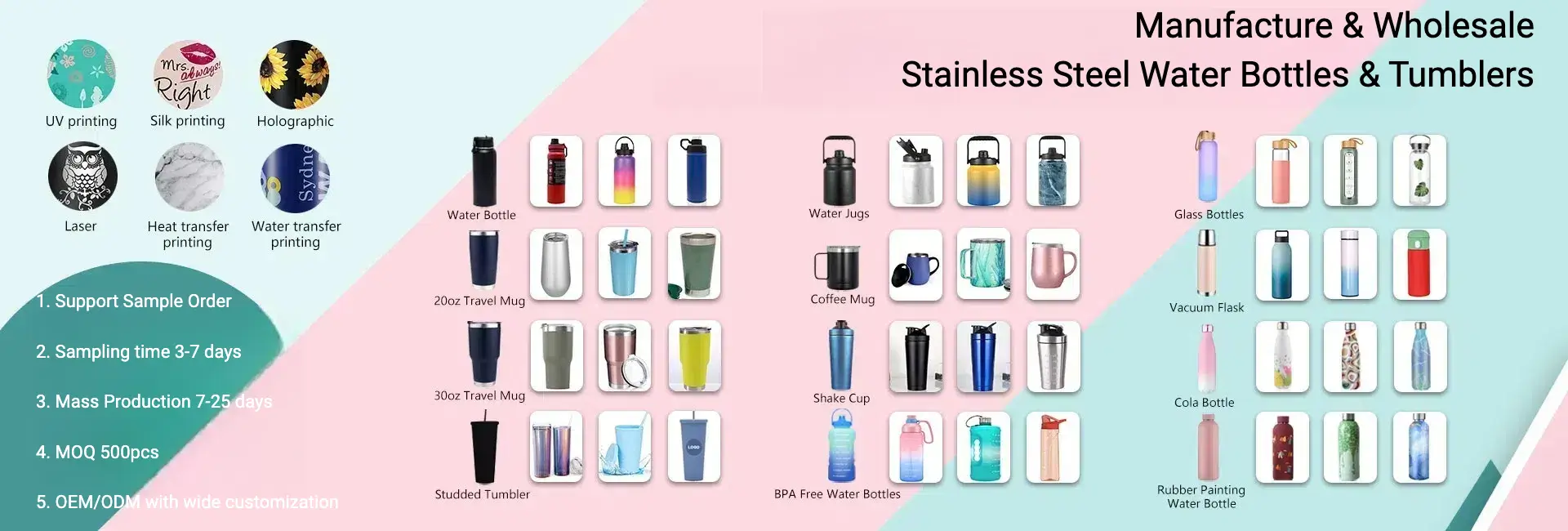
This guide breaks down everything you need to know about stainless steel water bottle manufacturing in 2025—from raw materials and production techniques to quality control and emerging trends. Whether you're looking to improve product sourcing or gain a competitive edge, this guide will help you navigate the industry with confidence.
I. Market Demand and Growth
We’ve seen firsthand how the demand for stainless steel water bottles has surged.Below is the search volume of stainless steel water bottle, you can see how hot it is these years.
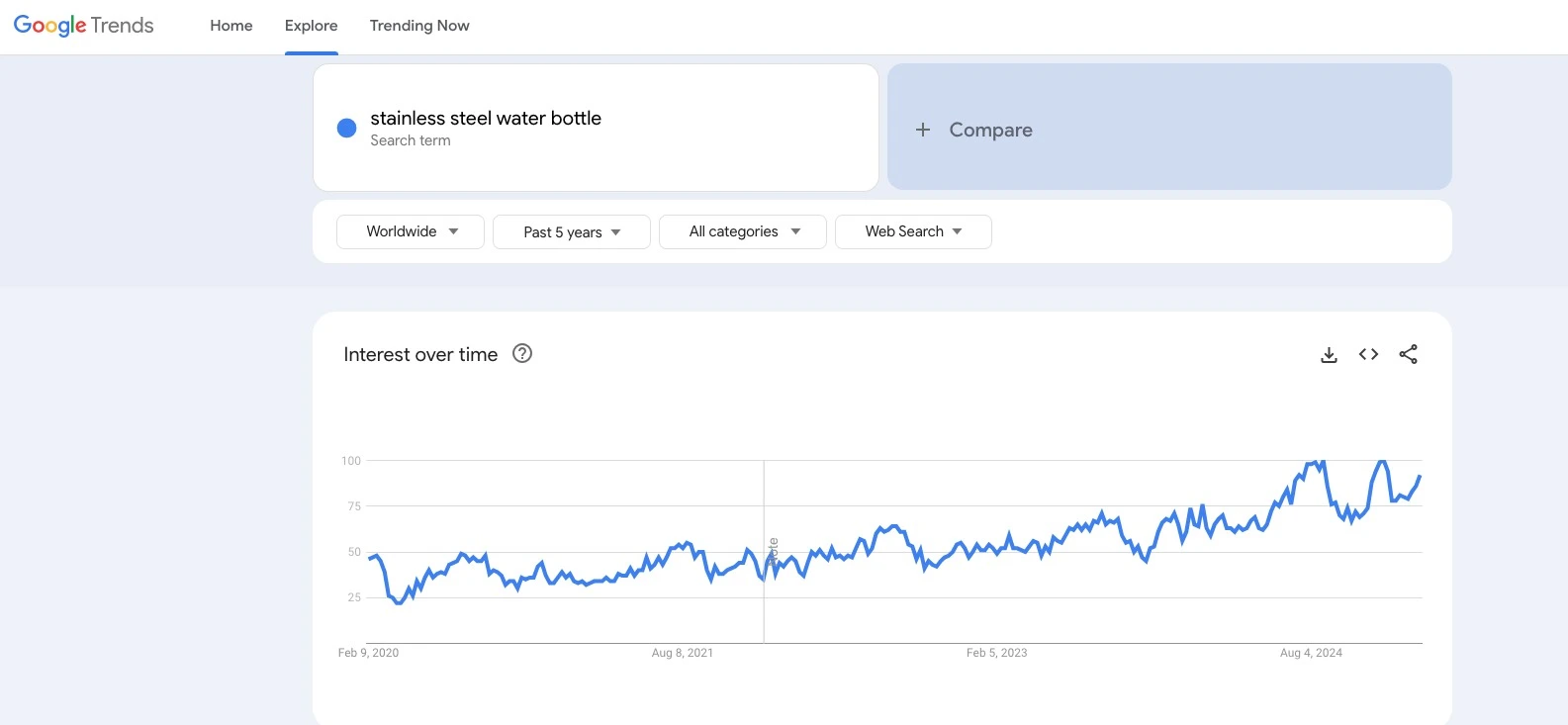
Consumers are shifting away from single-use plastics, and the numbers back it up. The global market is projected to hit $2.41 billion by 2033, growing from $1.25 billion in 2023 at a CAGR of 6.79%1.
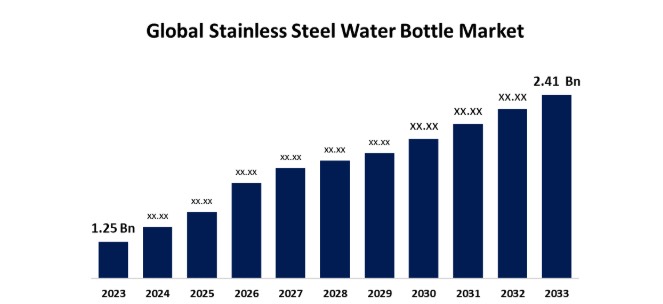
This shift isn’t just about personal choice. Governments worldwide are pushing for sustainable solutions, and businesses are rethinking their packaging strategies.
I recently spoke with a client who decided to eliminate plastic entirely. Their reason? Customers expected it. That moment reinforced why stainless steel is the future—it’s durable, eco-friendly, and aligns with consumer values.
Why Stainless Steel Water Bottles Are in High Demand

Several key factors are driving this market growth:
-
Environmental Awareness
People are ditching single-use plastics. Stainless steel bottles help cut waste, making them the go-to choice for eco-conscious consumers. -
Health and Safety
Unlike plastic, stainless steel doesn’t contain BPA2 or other harmful chemicals. It meets strict food-grade safety standards, making it the healthier alternative. -
Durability and Longevity
Stainless steel resists dents, keeps drinks fresh, and lasts longer than plastic or glass. Many outdoor enthusiasts and fitness buffs prefer it for this reason. -
Government Regulations
More regions are banning single-use plastics. This pushes both businesses and individuals toward reusable solutions like stainless steel bottles. -
Outdoor and Fitness Trends
Hikers, gym-goers, and campers need bottles that withstand rough conditions and maintain temperature control. Stainless steel fits that need perfectly.
For businesses, this trend presents a clear opportunity. The demand is growing, and brands that offer high-quality, stylish, and functional bottles are in a strong position to succeed.
What is the Key Global Markets Trends by Region

Market demand for stainless steel water bottles varies by region. North America, Europe, and Asia each have unique preferences, shaped by lifestyle trends and government policies.
1. North America: Innovation and Style Matter
North America is expected to hold around 37% of the global market share by 2033. The region has long embraced sustainability and health-conscious buying habits.
-
Smart Features Are Gaining Traction
More consumers want high-tech bottles with UV sterilization, hydration tracking, or fitness app integrations. -
Design Is Just as Important as Functionality
Many buyers see their bottle as a fashion accessory. Unique colors, patterns, and brand collaborations drive sales. I’ve worked on projects where a stylish design made all the difference in marketing success.
2. Europe: Sustainability First
Europe has consistently high demand for stainless steel bottles, thanks to strong environmental regulations and conscious consumer habits.
-
Buyers Want Proven Sustainability
European consumers ask detailed questions about recyclability, carbon footprint, and responsible sourcing. -
Multi-Functionality Appeals to Travelers
Many prefer bottles with added features, like built-in infusers or collapsible designs. These innovations cater to people with active or travel-heavy lifestyles.
3. Asia: Customization and Safety Drive Demand
Asia-Pacific is the fastest-growing market, fueled by rapid urbanization and evolving consumer preferences.
-
Personalization Is a Key Selling Point
Custom logos, engraved names, and social media-friendly designs boost engagement and sales. -
Health Certifications Matter
Buyers prioritize BPA-free claims and ask for compliance documentation before purchasing.
What is the 2025 Regional Design Trends?
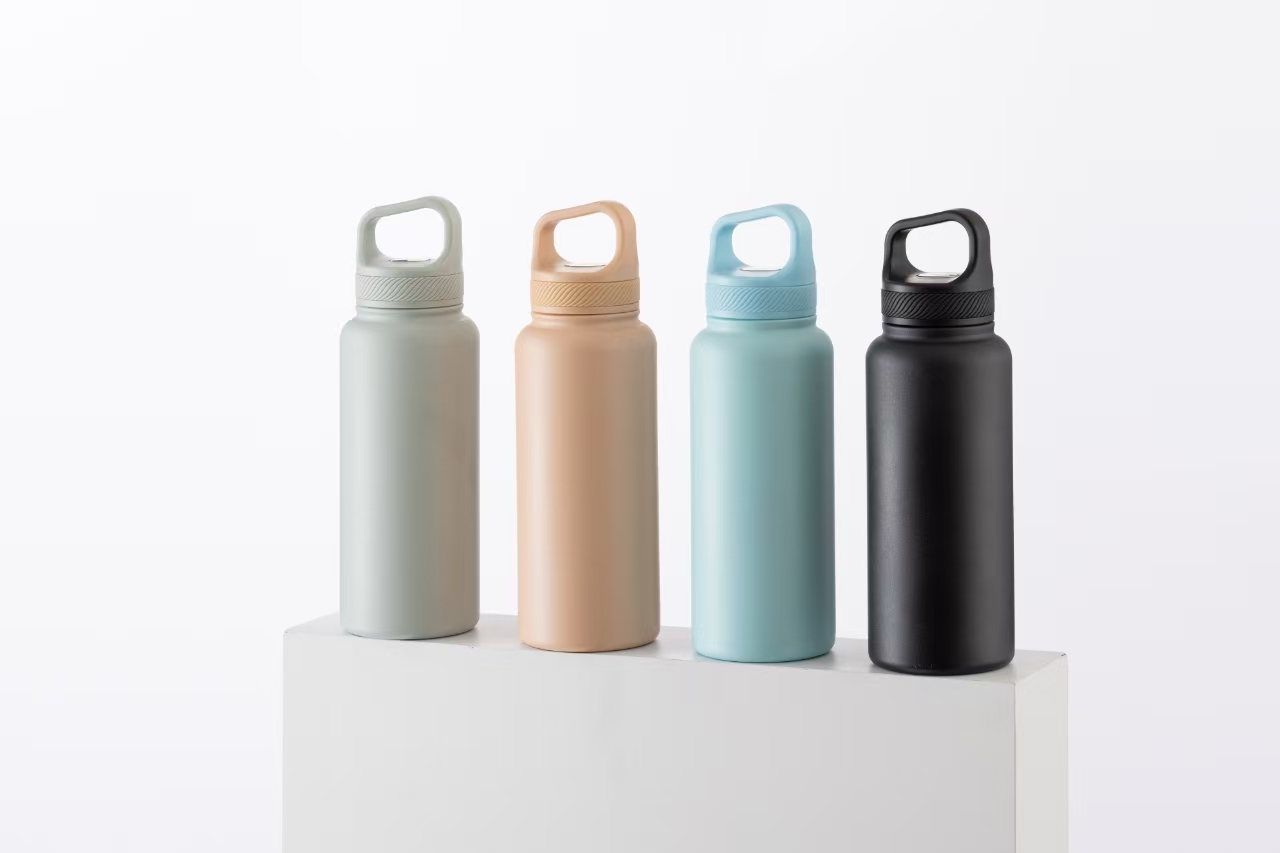
Across all regions, three common trends stand out:
- Durability – Consumers want bottles that withstand daily use, leading to thicker stainless steel construction.
- Sustainability – The shift away from plastics is global, reinforcing the demand for recyclable materials.
- Functionality – Features like vacuum insulation, leak-proof lids, and hybrid designs are in high demand.
For brands, adapting to these regional preferences can make or break success in new markets.
What Consumers Want in 2025?
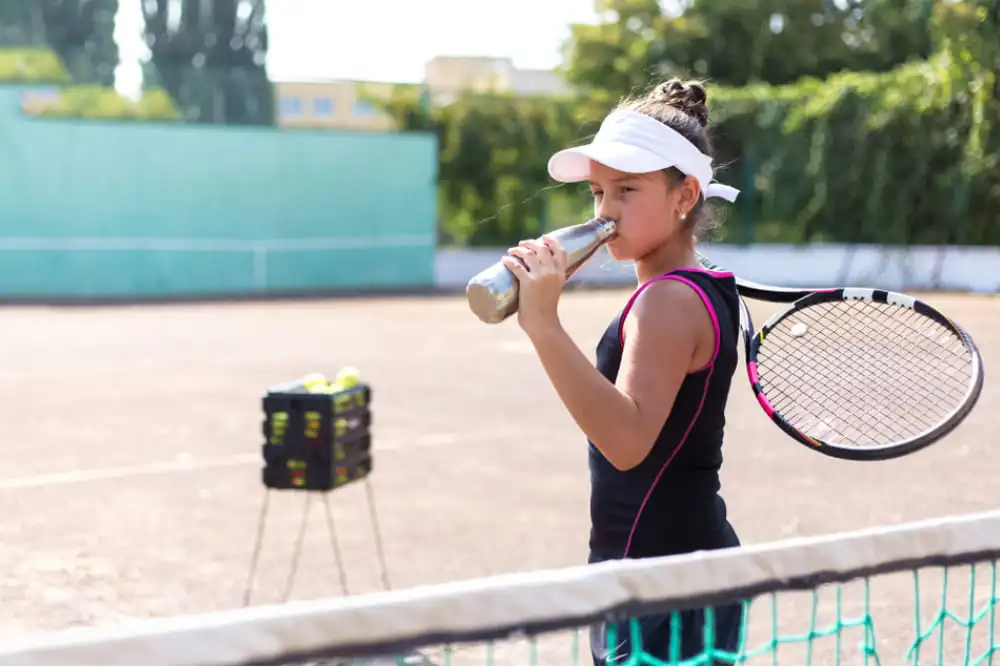
Gen Z3 is leading the charge in the stainless steel bottle movement. They value sustainability, aesthetics, and functionality. Here’s what drives their purchasing decisions:
-
Eco-Conscious Choices
A survey found that 69% of Gen Z buyers choose reusable bottles for environmental reasons. Many see it as their way of reducing waste. -
Aesthetic Appeal
Water bottles are now a personal statement. Bright colors, custom stickers, and unique designs make them trendier than ever. -
Temperature Retention
Hot drinks should stay hot. Cold drinks should stay cold. Insulation is a top priority, especially for outdoor and fitness enthusiasts. -
Material Safety
Health-conscious consumers prefer stainless steel because it’s BPA-free and doesn’t leach chemicals. -
Brand Values Matter
Many Gen Z buyers research a company’s mission before purchasing. They favor brands with eco-friendly initiatives or social impact programs. -
Water Bottles as a Status Symbol
A trendy brand or unique design boosts social media engagement. This is especially true among students and young professionals.
Overall, Gen Z’s strong focus on sustainability, style, and brand values sets the tone for the future of stainless steel water bottles. They look for products that reflect their lifestyle—healthy, eco-conscious, and creative.
II. Raw Materials and Selection
Choosing the right raw materials is critical in stainless steel water bottle manufacturing. The type of stainless steel impacts durability, safety, cost, and sustainability. This section breaks down the most commonly used stainless steel grades, quality control measures, and sustainability factors to help you make informed sourcing decisions.
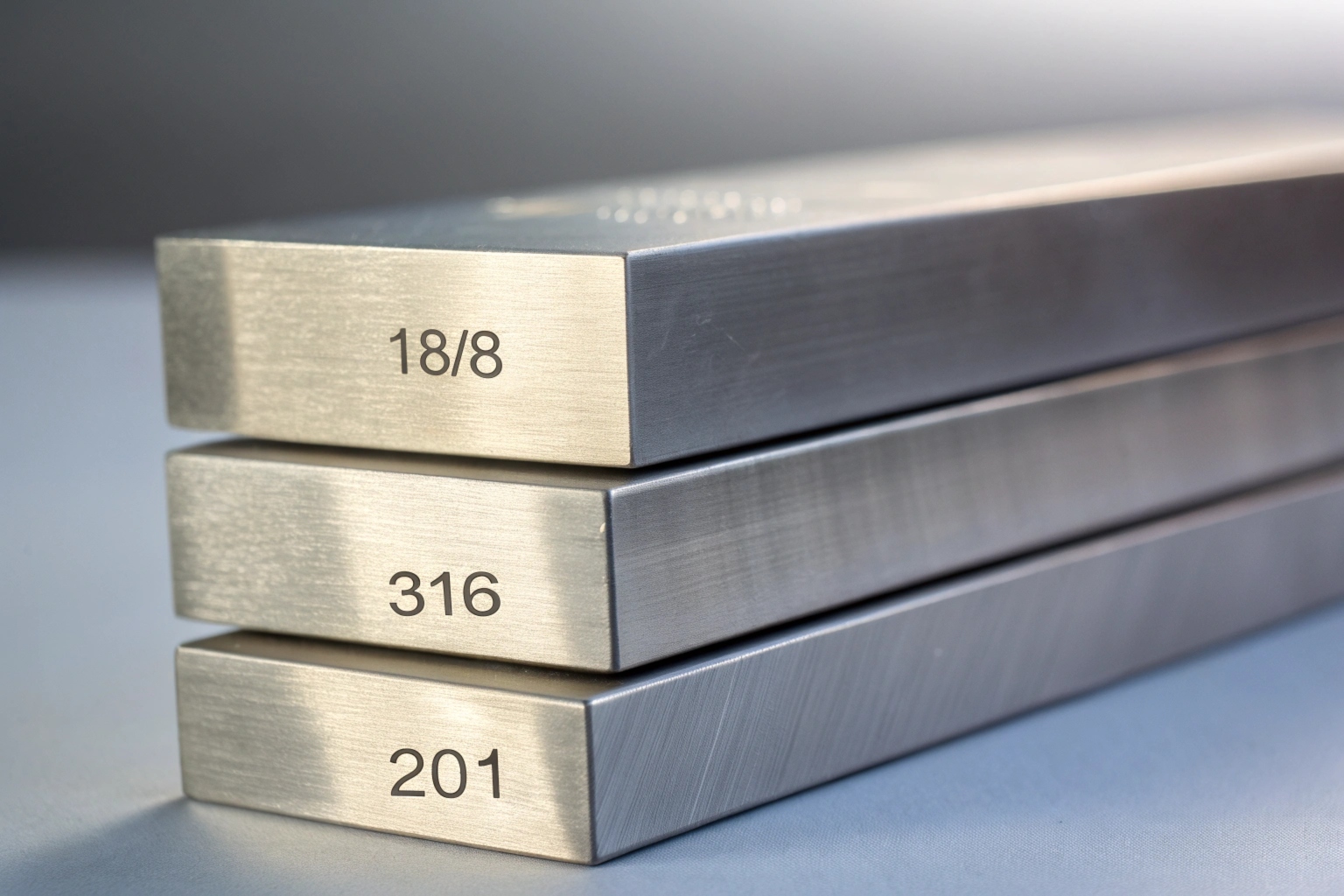
Choosing the Right Stainless Steel
Not all stainless steel is the same. Each grade has different properties, costs, and ideal applications. Here's a quick comparison:
Common Stainless Steel Grades for Water Bottles
| Grade | Composition | Key Features | Corrosion Resistance | Strength | Cost | Best For |
|---|---|---|---|---|---|---|
| 201 Stainless Steel | Low nickel, 16-18% chromium | Low cost, high hardness, but lower rust resistance | Moderate | High | Low | Budget-friendly products, outer shells |
| 304 Stainless Steel (18/8) | 18% chromium, 8-10% nickel | Food-grade, strong corrosion resistance, non-toxic, widely used | High | Medium | Medium | Everyday water bottles, outdoor use, health-conscious markets |
| 316 Stainless Steel | 16-18% chromium, 10-14% nickel, 2-3% molybdenum | Medical-grade, excellent resistance to salt and acids | Very High | High | High | High-end water bottles, marine environments, baby products |
| 430 Stainless Steel | 14-18% chromium, no nickel | Magnetic, moderate rust resistance, mainly decorative | Moderate | Medium | Low | Bottle exteriors, decorative parts |
| Titanium | 99.5%+ pure titanium | Lightweight, ultra-durable, non-toxic, high-end material | Extremely High | Very High | Very High | Premium outdoor bottles, medical-grade drinkware |
| Copper-Plated Liner | Inner coating of copper | Enhances insulation but not a standalone material | High | - | High | High-performance vacuum-insulated bottles |
If you want to know more about the difference between the most used 304 and 316 stainless steel, below videos and information will be helpful for you:
How Material Selection Affects Performance
Your choice of material affects more than just cost—it impacts durability, weight, and thermal performance.
Material Thickness Considerations
| Factor | Recommended Thickness | Why It Matters |
|---|---|---|
| Standard Water Bottles | 0.3mm - 0.5mm | Lightweight, lower cost, suitable for everyday use |
| Vacuum-Insulated Bottles | 0.4mm - 0.6mm | Ensures vacuum integrity and improves insulation |
| High-End Bottles | 0.6mm - 1.0mm | Enhances durability, premium feel |
| Promotional/Budget Bottles | 0.3mm - 0.4mm | Reduces costs, but may impact strength |
| Outdoor/Sports Bottles | 0.5mm - 0.8mm | Balances durability and weight |
Most mainstream stainless steel bottles use 0.4mm - 0.6mm, striking the right balance between durability and cost. Testing samples is crucial to ensure the material thickness meets market expectations.
How to Ensuring Material Quality?
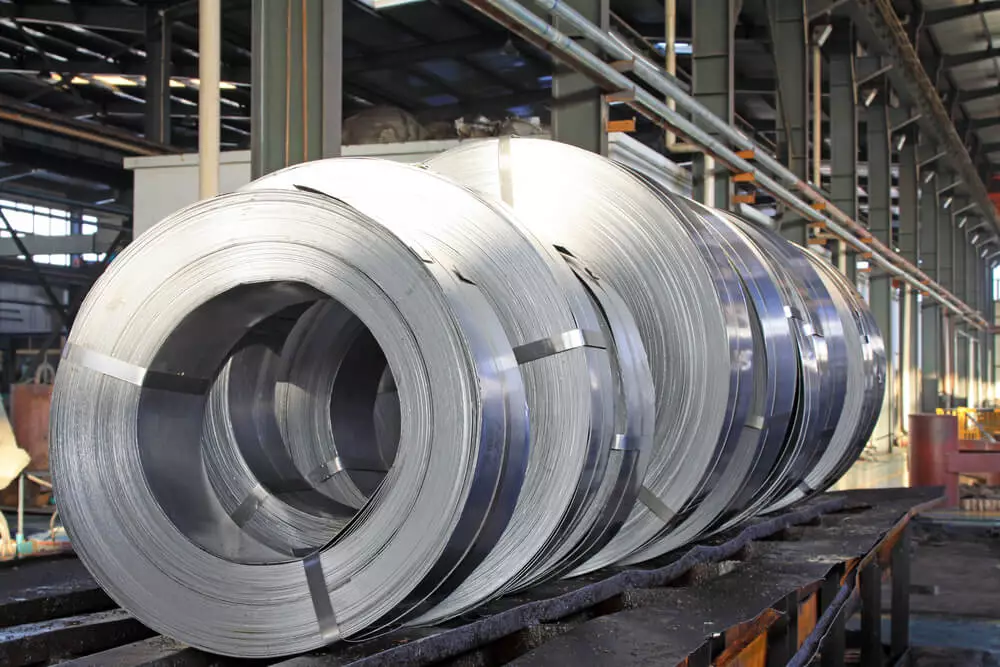
1. How to Verify Stainless Steel is Food-Grade
Not all stainless steel is safe for food and beverage contact. To ensure compliance, manufacturers should check for:
✅ Food-Grade Certifications
- FDA Compliance (USA)
- EU Regulation No. 10/2011 (Europe)
- LFGB Certification (Germany)
These certifications confirm that the stainless steel contains no harmful substances.
✅ Material Composition Testing
- Conduct spectrometer analysis to verify nickel and chromium levels.
- Ensure the steel does not leach harmful metals into beverages.
✅ Corrosion and Safety Tests
- Salt spray tests confirm rust resistance.
- Heavy metal tests detect contaminants like lead or cadmium.
2. How to do Quality Control During Raw Material Procurement?
When purchasing stainless steel, manufacturers must follow strict quality inspection and traceability procedures:
Key Quality Control Steps
| Step | Purpose | How It’s Done |
|---|---|---|
| Supplier Certification | Ensure materials meet standards | Verify ISO 9001, LFGB, and food safety compliance |
| Batch Testing | Detect defects early | Test small samples before full production |
| Chemical Composition Analysis | Confirm food-grade properties | Use spectrometry to check nickel, chromium, and lead levels |
| Surface Inspection | Avoid scratches or defects | Visual and machine inspection |
| Hardness and Strength Testing | Ensure durability | Apply stress tests |
3. Why Material Traceability Matters?
A transparent supply chain helps manufacturers track raw materials from source to final product.
✅ Supplier Mapping – Identify all material sources to prevent quality inconsistencies.
✅ Batch Numbering – Assign unique codes to trace materials back to suppliers.
✅ Regular Supplier Audits – Verify ethical sourcing and compliance with sustainability standards.
What is Sustainability and ESG in Stainless Steel?
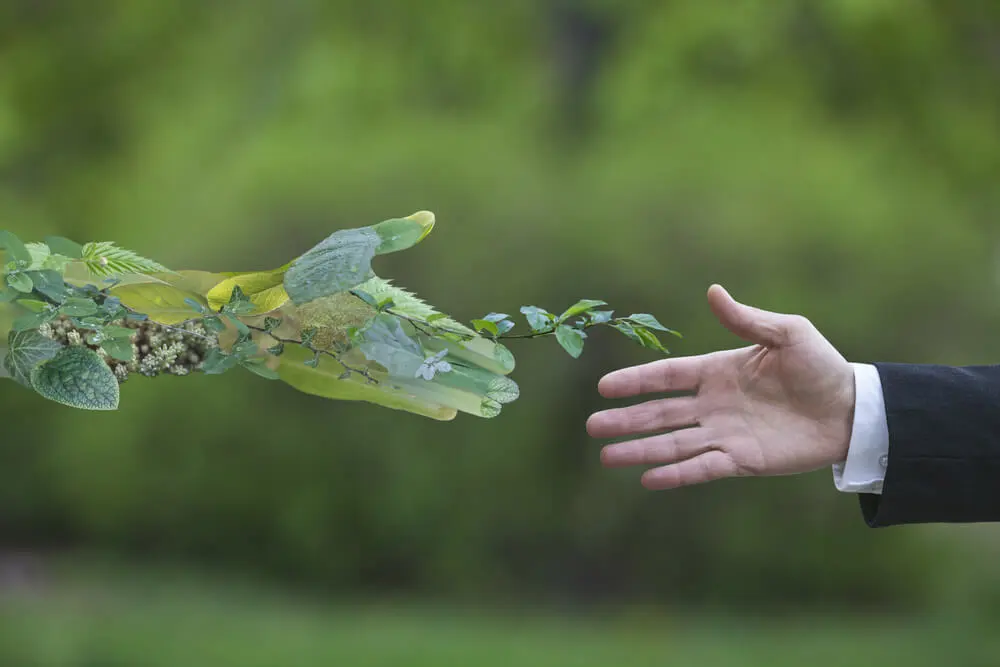
1. Is Stainless Steel Eco-Friendly?
Yes—stainless steel is 100% recyclable and has a 90%+ recycling rate. Unlike plastic, it doesn’t degrade with reuse, making it one of the most sustainable materials available.
Environmental Benefits of Stainless Steel Recycling
✅ Cuts Waste – Keeps materials in circulation instead of landfills.
✅ Saves Energy – Recycling stainless steel uses 50% less energy than producing new steel.
✅ Reduces Resource Extraction – A single ton of recycled stainless steel saves 1,100kg of iron ore.
✅ Lowers Carbon Footprint – Recycling emits significantly less CO₂ than mining and refining new steel.
2. ESG (Environmental, Social, Governance) Impact on Sourcing
What is ESG4? According to Wikipedia, Environmental, social, and governance (ESG) is shorthand for an investing principle that prioritizes environmental issues, social issues, and corporate governance.
Businesses worldwide are now prioritizing ESG compliance when sourcing raw materials. Here’s how ESG affects stainless steel manufacturing:
How ESG Affects Stainless Steel Sourcing
| ESG Factor | Impact on Raw Material Selection |
|---|---|
| Sustainable Sourcing | Companies now prioritize suppliers with strong environmental policies. This includes reducing emissions, using renewable energy, and responsible mining. |
| Supply Chain Transparency | More businesses require traceability systems to track material origins and compliance. Blockchain and AI are being used to improve visibility. |
| Ethical Labor Practices | Suppliers must comply with fair wages, safe working conditions, and labor laws to be considered ESG-compliant. |
| Government Regulations | Laws like the German Supply Chain Act now require companies to ensure their entire supply chain meets ESG standards. |
While ESG compliance may add costs, long-term benefits include brand loyalty, risk reduction, and alignment with global sustainability goals.
Raw material selection is one of the most critical factors in stainless steel water bottle manufacturing. The right materials ensure safety, durability, and cost-effectiveness, while ESG compliance helps businesses stay ahead of regulatory changes and consumer expectations.
✅ Choose the right steel grade based on durability and budget.
✅ Ensure food-grade compliance through rigorous testing.
✅ Implement traceability systems to guarantee quality and ethical sourcing.
✅ Embrace ESG-friendly practices to future-proof your business.
By making informed material choices, manufacturers can optimize product quality, reduce risks, and meet consumer demand for eco-friendly, high-performance water bottles. 🚀
III. Stainless Steel Water Bottle Manufacturing: Step-by-Step Process
1. Overview of the Production Process
The production of stainless steel water bottles follows a meticulous and precise manufacturing process to ensure durability, functionality, and high insulation performance. At SiBottle, we know that precision, material quality, and advanced production techniques determine the performance and durability of a stainless steel water bottle. This section breaks down every step of the manufacturing process, including vacuum insulation technology, welding, surface treatment, and final quality testing.
The process consists of four key stages:
📌 Key Stages of Production
| Stage | Process | Key Considerations |
|---|---|---|
| Raw Material Preparation | Cutting 304/316 stainless steel sheets or tubes | Must meet FDA, LFGB, and ISO standards |
| Body Forming | Deep drawing or hydroforming | Ensures seamless, leak-proof construction |
| Vacuum Sealing | Creating a vacuum layer between double walls | Maintains long-lasting insulation |
| Surface Treatment & Finishing | Sandblasting, electro-polishing, or powder coating | Enhances appearance, grip, and durability |
| Quality Control & Leak Testing | Checking insulation, sealing, and durability | Ensures no defects before packaging |
2. Raw Material Preparation
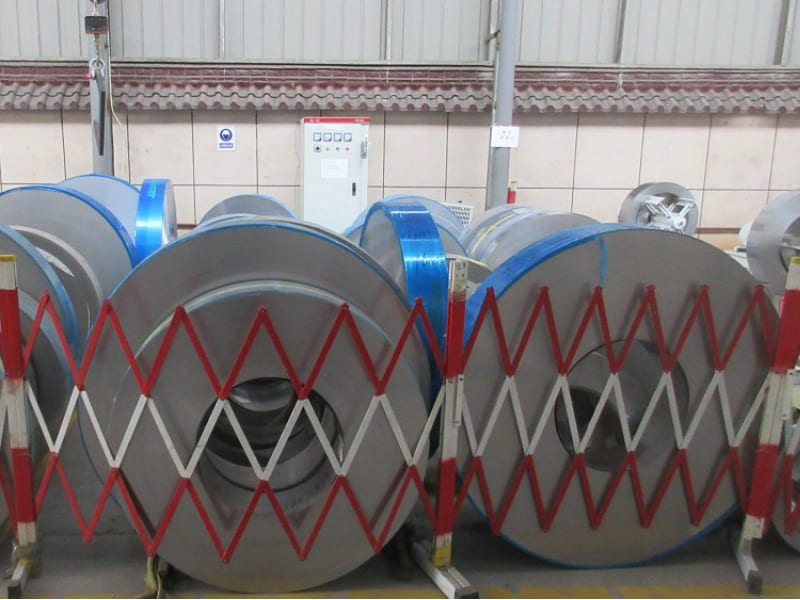
The first step in manufacturing is selecting the right stainless steel based on product specifications.
✅ Material Selection:
- 304 Stainless Steel: Corrosion-resistant, durable, food-safe.
- 316 Stainless Steel: Used for premium bottles, offering enhanced resistance to extreme environments.
3. Body Forming: Creating the Bottle Shape
the stainless steel is formed into a cylindrical bottle shape using advanced techniques.
Deep Drawing Process
- A press machine applies force to shape a flat stainless steel sheet into a cylindrical form.
- Multi-step drawing is required for thicker walls or larger capacity bottles.
- Stretching and Shaping: Ensures a consistent wall thickness and smooth contour.
Alternative: Water Expansion Process
- Used for seamless bottles by expanding a steel tube into a bottle shape under high-pressure water.
- Results in no welding seams, increasing durability.
✅ Common Issues & Solutions
| Issue | Cause | Solution |
|---|---|---|
| Cracks or Tears | Excessive stretching | Optimize multi-stage forming |
| Uneven Thickness | Poor material flow | Gradual press application |
| Wrinkling | High edge pressure | Adjust blank holder force |
4. Welding: Assembling the Bottle Structure
For double-walled bottles, welding is required to join components securely.
🔹 Welding Techniques
| Welding Type | Advantages | Impact on Quality |
|---|---|---|
| Laser Welding | High-precision, minimal heat impact | Prevents leaks, maintains insulation |
| Argon Arc Welding (TIG) | Strong, durable welds | Ensures long-term rust resistance |
Why Welding Matters:
✅ Prevents leaks and ensures vacuum insulation remains intact.
✅ Seamless bottles don’t require welding, reducing defect risk.
A poorly welded bottle may:
❌ Develop leaks over time
❌ Lose vacuum insulation
❌ Show rust spots at weak weld joints
High-end water bottles use laser welding to maintain insulation while keeping a seamless appearance.
5. Vacuum Insulation: Creating the Heat Barrier
For insulated bottles, a vacuum layer is created between the inner and outer walls to prevent heat transfer.
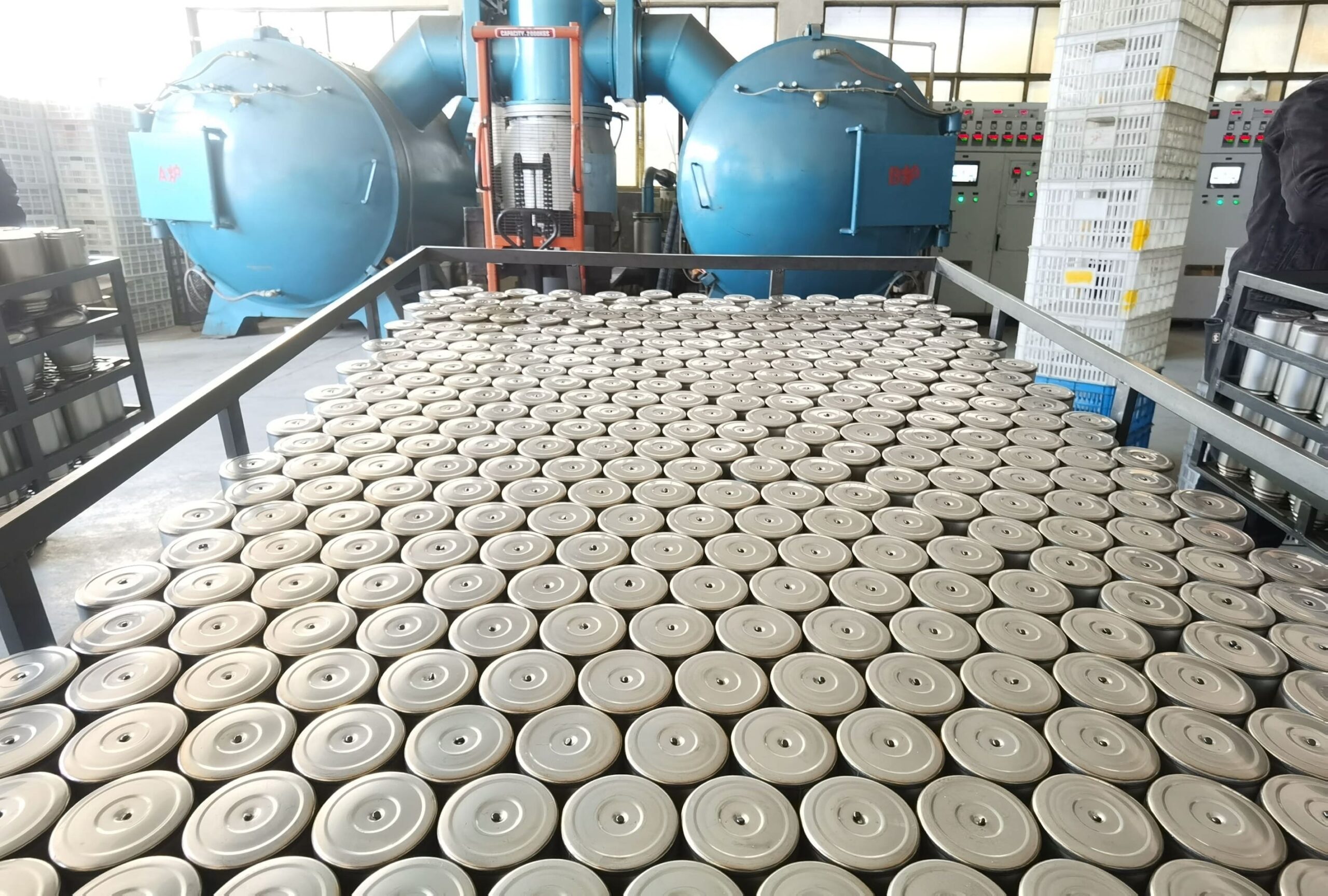
How Vacuum Insulation Works
✅ Double-Wall Structure:
- Two stainless steel layers are used.
- The space between them is evacuated to create a vacuum.
✅ Minimizing Heat Transfer:
- Conduction: Stainless steel is a heat conductor, but the vacuum layer stops direct heat transfer.
- Convection: With no air molecules, convection-based heat loss is eliminated.
- Radiation: Copper or aluminum coating reflects heat back, improving insulation.
Key Components of Vacuum Insulation
| Component | Function |
|---|---|
| 304/316 Stainless Steel | Durable, corrosion-resistant structure |
| Vacuum Layer | Prevents heat loss via conduction & convection |
| Copper/Aluminum Coating | Enhances insulation by reducing radiant heat loss |
| Sealing Technology | High-precision sealing maintains vacuum for years |
Advantages of Vacuum Insulation:
✅ Hot drinks stay hot for 12–24 hours.
✅ Cold beverages remain chilled for 24–48 hours.
✅ No condensation on the exterior.
How to Test Vacuum Insulation Performance
- Fill the bottle with 95°C (203°F) hot water.
- Measure the temperature after 6 hours and 12 hours.
- Pass Criteria:
- After 6 hours → Temperature should remain above 70°C (158°F).
- After 12 hours → Temperature should be above 50°C (122°F).
Quick Consumer Test for Insulation
✅ Fill the bottle with boiling water, close the lid, and wait for 5 minutes.
✅ Touch the outer wall—if it feels warm, the insulation is weak.
✅ If the bottle remains cool, the insulation is effective.
6. Surface Treatment & Finishing
To improve appearance, texture, and longevity, bottles go through surface finishing processes.
🔹 Common Surface Treatments
| Treatment Type | Features | Best Use Cases |
|---|---|---|
| Sandblasting | Matte finish, scratch-resistant | Sports & outdoor bottles |
| Brushed Finish | Metallic texture | Stylish & high-end designs |
| Electro-Polishing | High-gloss, anti-corrosion | Food-grade & medical use |
| Powder Coating | Non-slip, durable color coating | Custom branding & corporate gifts |
7. Assembly & Final Testing
After forming, welding, and finishing, the bottle components are assembled and tested.
✅ Leak Testing: Bottles are filled with water, sealed, and checked for leaks.
✅ Vacuum Seal Testing: Ensures insulation performance remains intact.
✅ Thermal Performance Testing:
| Test Type | Temperature Check | Pass Criteria |
|---|---|---|
| Heat Retention | Fill with 95°C hot water, measure after 6 and 12 hours | ≥70°C after 6 hours, ≥50°C after 12 hours |
| Cold Retention | Fill with 4°C cold water, measure after 6 hours | ≤10°C after 6 hours |
✅ Impact & Durability Tests: Drop tests simulate real-world use.
8. Customization & Branding
At SiBottle, we offer a wide range of customization techniques to help brands create unique, high-quality stainless steel water bottles. Whether you're looking for engraving, printing, or specialty finishes, our OEM & ODM solutions ensure that your bottles stand out in the market.
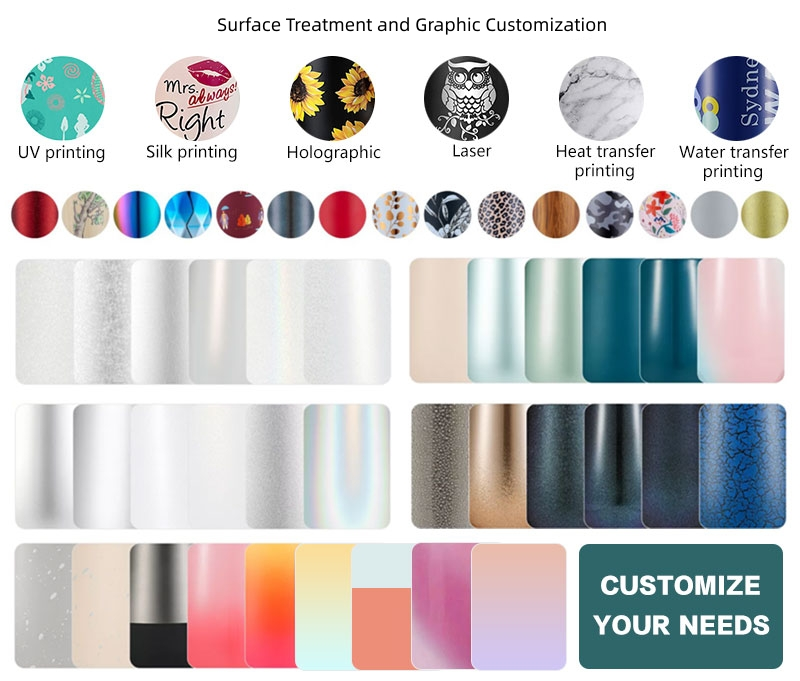
Engraving Techniques: Permanent & High-End Branding
Engraving provides a long-lasting, premium finish that is resistant to wear and tear. This method is ideal for corporate branding, promotional gifts, or high-end retail products.
🔹 Laser Engraving
From below video, you can see very clearly how laser engraving work and what is the effect of laser engraved logo.
- Uses a high-precision laser to etch designs onto the bottle’s surface.
- Produces a sleek, permanent, and non-fading finish.
- Best suited for logos, monograms, detailed patterns, and personalized text.
🔹 Rotary & Diamond Drag Engraving
- These methods add depth and texture for a highly detailed engraving.
- Perfect for luxury brands looking for a distinct, hand-crafted appearance.
Printing Techniques: Full-Color & Vibrant Designs
If your brand requires bold colors, intricate designs, or photographic prints, we offer advanced printing solutions that ensure vivid, durable results.
UV Printing
- Uses ultraviolet light to instantly cure ink onto the bottle’s surface.
- Ensures a vibrant, high-resolution, full-color print.
- Ideal for detailed artwork, logos, and promotional branding.
Heat Transfer Printing
- Transfers designs onto the bottle using heat and pressure.
- Allows for smooth gradients and complex color transitions.
- A great choice for customized artwork and retail designs.
Vinyl Printing & Decals
- Offers a bold, colorful look with easy application.
- Best for limited-edition designs, event branding, and promotional campaigns.
Digital Inkjet Printing
- Provides sharp details and bright colors on coated surfaces.
- Works well for aluminum and stainless steel bottles.
Specialty Coatings & Wrapping
For brands that want a distinctive texture, added grip, or enhanced durability, we offer coating and wrapping solutions that enhance both aesthetics and function.
Powder Coating
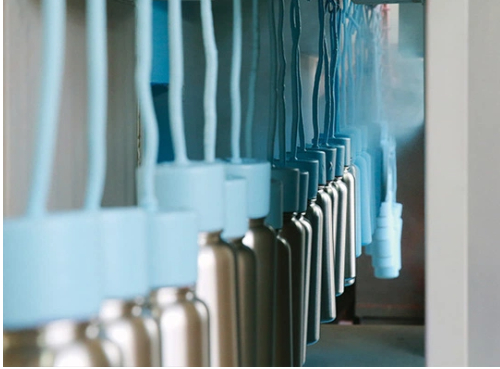
- A durable, scratch-resistant matte or glossy finish.
- Available in a wide range of colors, including custom Pantone shades.
- Adds a non-slip grip and enhances bottle longevity.
Hydro Dipping
- Immerses the bottle into a water-based film for a seamless, all-over pattern.
- Great for camouflage, marble, and abstract designs.
- Ideal for outdoor and sports-themed branding.
Vinyl Wrapping
- Covers the bottle with a custom vinyl design.
- Provides UV protection and an extra layer of scratch resistance.
- Best for limited-edition releases or high-impact branding.
Additional Customization Features
✅ Custom Lids & Accessories
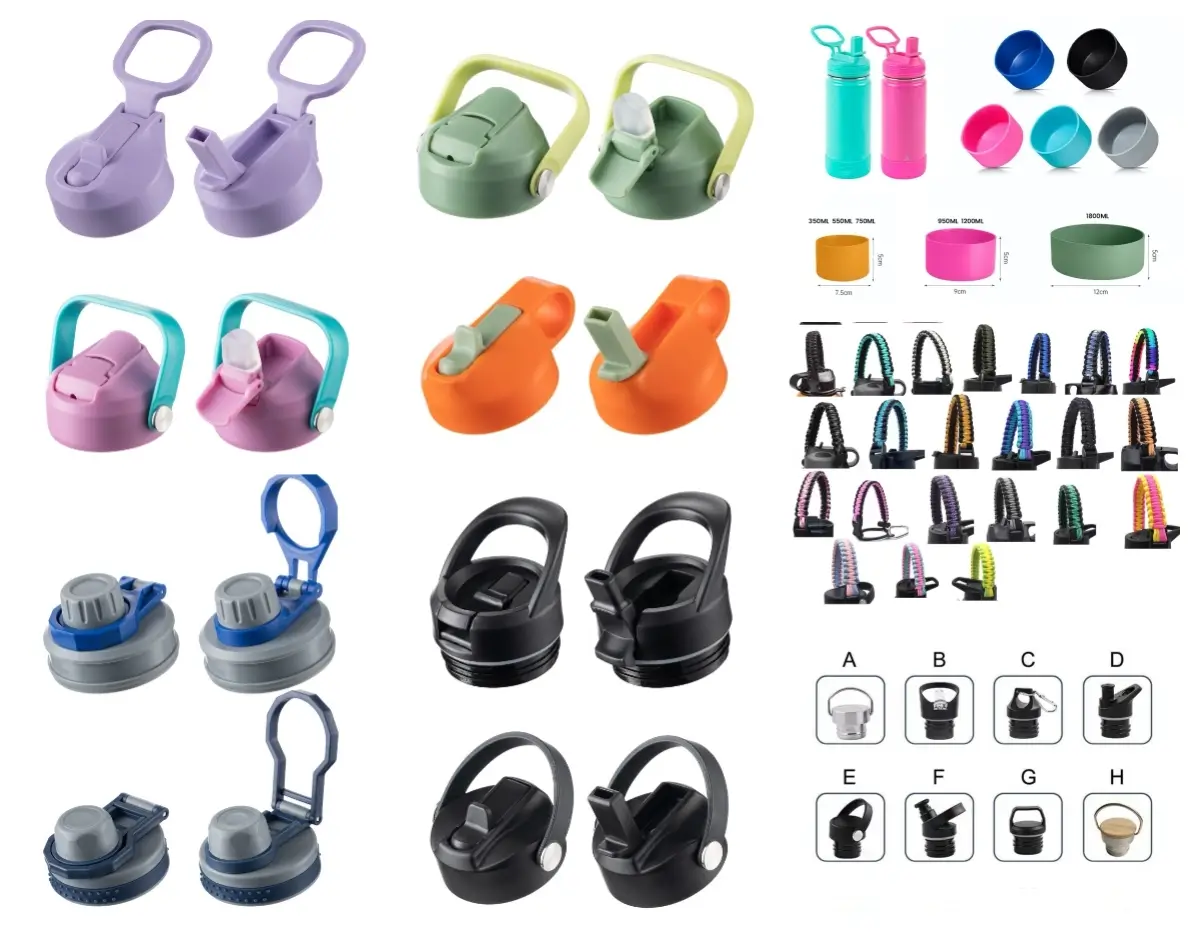
- Personalize your bottle with customized lids, carrying straps, or silicone sleeves.
- Options include bamboo lids, metal caps, flip lids, and sport spouts.
✅ Logo Placement & Embossing
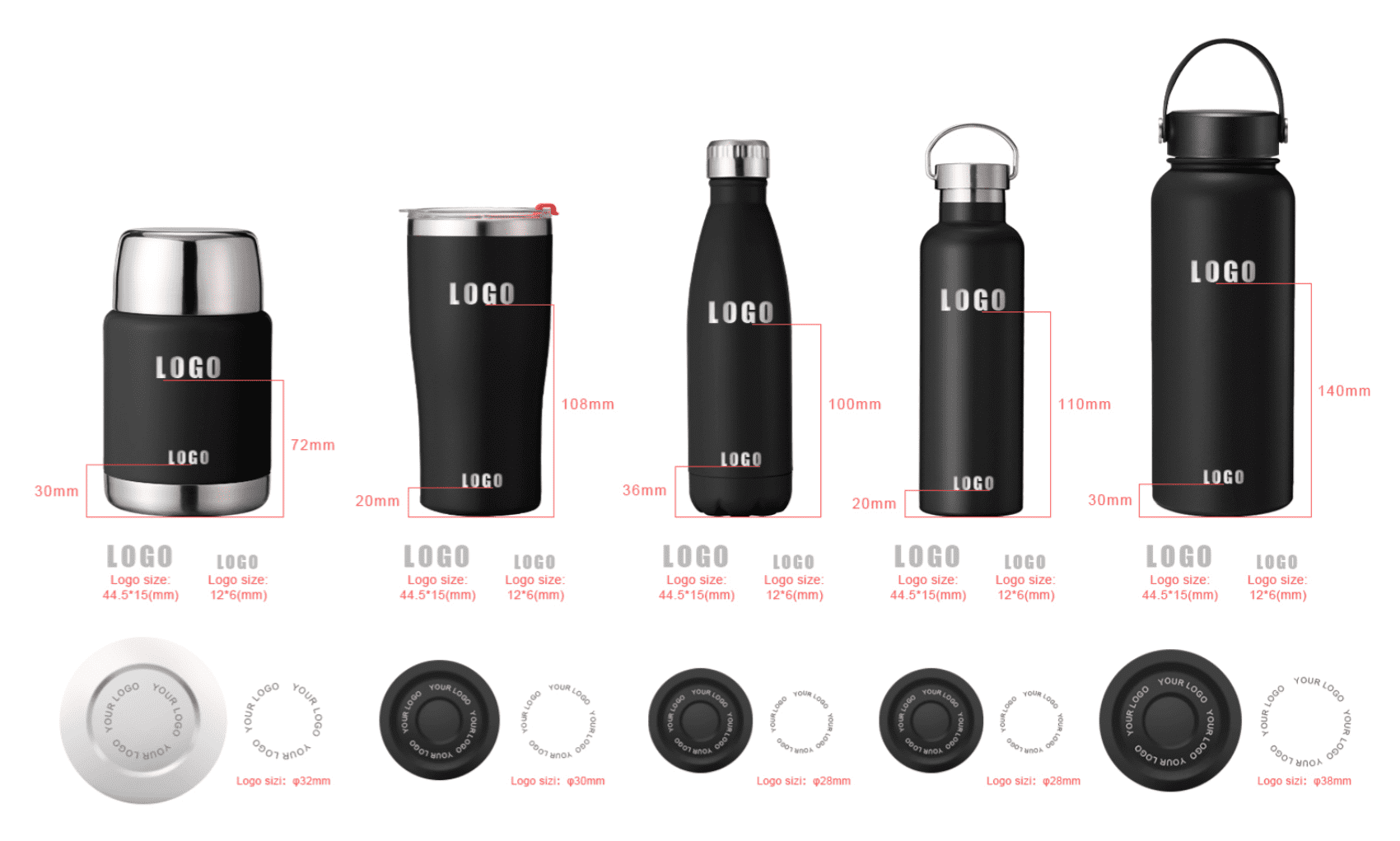
- Laser or metal embossing creates a raised, tactile logo for a premium look.
- Strategic placement ensures the best visibility for your brand.
✅ Font & Design Considerations
- Choose from a variety of modern and classic fonts for engraving.
- Logos and branding are carefully positioned to complement the bottle’s curves and contours.
Choosing the Right Customization for Your Brand
When selecting a customization method, consider:
| Factor | Best Customization Method |
|---|---|
| Durability & Longevity | Laser Engraving, Powder Coating |
| High-Resolution Color Printing | UV Printing, Heat Transfer |
| Luxury & Premium Branding | Diamond Drag Engraving, Etching |
| Sports & Outdoor Use | Hydro Dipping, Powder Coating |
| Promotional & Corporate Gifts | UV Printing, Vinyl Decals |
| Eco-Friendly Appeal | Natural Bamboo Lids, Minimalist Engraving |
9. Packaging
Packaging is more than just protection—it's a powerful tool for brand identity, product safety, and consumer engagement.
A well-designed package enhances the unboxing experience, boosts perceived value, and ensures bottles arrive in perfect condition. This chapter explores standard packaging solutions for durability and custom packaging options to strengthen your market presence.
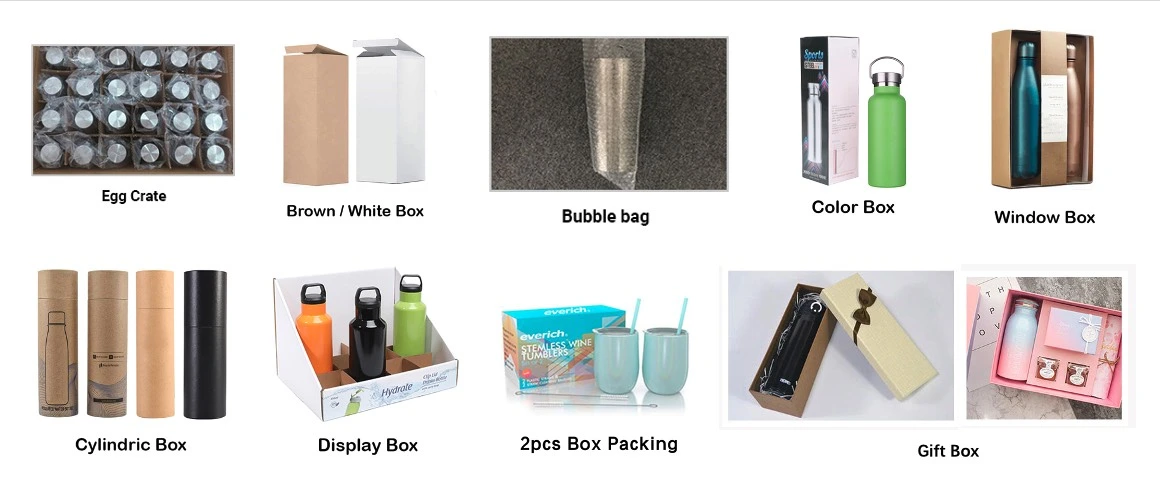
1. What Are the Standard Packaging Solutions?
For most manufacturers, standard packaging focuses on cost-effective protection during shipping and storage. Here are the most common methods:
Individual Poly Bags
Each bottle is sealed in a polyethylene bag to prevent surface scratches and minor abrasions during transportation. This is a simple and affordable solution, especially for bulk shipments.
Bubble Wrap for Cushioning
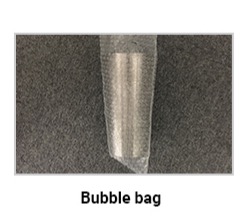
Bubble wrap provides shock absorption, reducing the risk of dents or damage during handling. This is particularly useful for fragile coatings or printed designs that need extra care.
Standard White/Kraft box

Standard White/Kraft box provides protection for stainless steel water bottles, reducing the risk of dents or damage during handling.
Corrugated Boxes for Stability
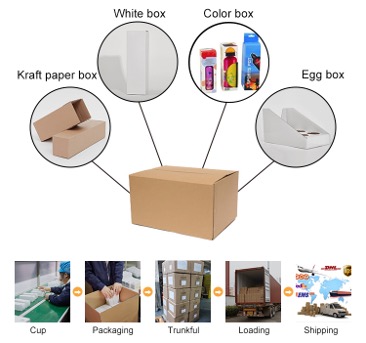
Bottles are packed in corrugated cardboard boxes, offering structural support and preventing deformation under stacking pressure. These boxes are standard for large-scale distribution and wholesale shipments.
2. What are the Custom Packaging Options for stainless steel water bottles?
Custom packaging takes presentation and brand visibility to the next level. It’s an investment that differentiates your product from competitors and enhances consumer perception.
Custom Gift Boxes

- Premium gift boxes elevate the unboxing experience, making them ideal for retail and corporate giveaways.
- Can be branded with logos, patterns, or embossing for a high-end appeal.
- Often used for direct-to-consumer sales, luxury markets, and promotional gifts.
Cylinder Boxes for a Sleek Look

- A modern alternative to traditional box packaging, cylinder boxes provide a snug fit and a 360-degree branding surface.
- Offers a premium retail display while ensuring secure protection against impact.
Set Box Designs for Bundles
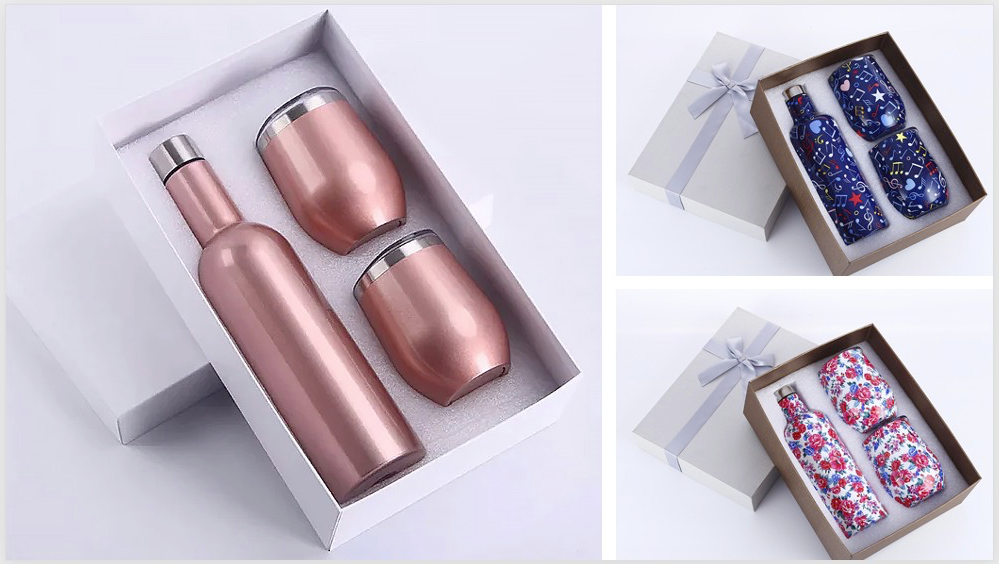
- Ideal for promotional or gift sets, these boxes accommodate multiple items, such as:
- A bottle with interchangeable lids
- Cleaning brushes for maintenance
- Custom straws or accessories
- Enhances perceived value by offering an all-in-one hydration package.
Printed Polyethylene Bags for Minimalist Branding
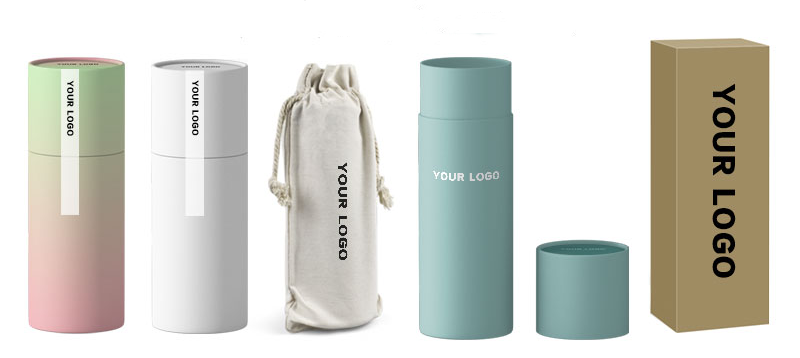
- Cost-effective and lightweight, printed polyethylene bags serve as both protective layers and branding tools.
- Can feature logos, taglines, or QR codes linking to promotional campaigns or brand stories.
3. What Should You Consider When Designing Custom Packaging?
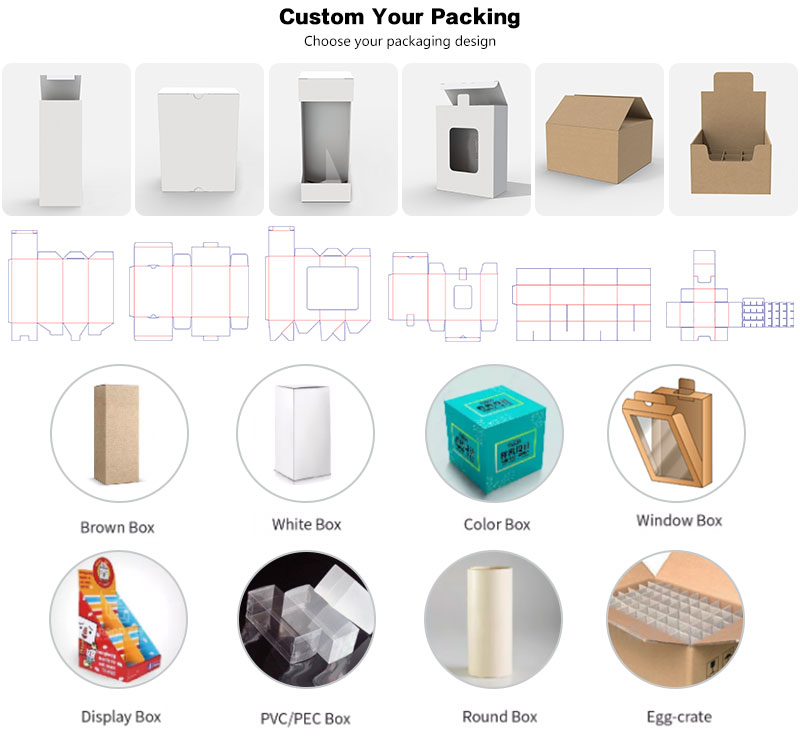
A well-designed package balances functionality, aesthetics, and sustainability. Here’s what to consider when developing custom packaging:
Material Selection: Eco-Friendly Packaging
- Consumers are increasingly drawn to sustainable and recyclable packaging.
- Options include recycled cardboard, biodegradable inks, and compostable materials.
- Eco-packaging aligns with ESG goals and global environmental standards.
Branding Integration: Consistency is Key
- Ensure that logos, color schemes, and messaging align with your overall brand identity.
- High-end printing techniques like UV spot printing, embossing, or foil stamping can enhance the luxury feel.
Functionality & User Experience
- A seamless unboxing experience can enhance customer engagement and encourage social sharing.
- Consider easy-to-open tabs, magnetic closures, or reusable packaging that adds value beyond initial use.
Product Protection Above All
- While aesthetics matter, the primary role of packaging is to protect the product.
- Ensure shock absorption, waterproofing, and durability for long-distance shipping.
4. What Are the Business Benefits of Custom Packaging?
Investing in customized packaging is not just about looks—it directly impacts brand recognition and perceived value.
Enhanced Brand Recognition
- Unique packaging makes your bottles stand out in retail displays and e-commerce product pages.
- Consistent branding strengthens customer recall and market positioning.
Higher Perceived Value
- Premium packaging can justify a higher price point, increasing margins without altering product quality.
- Gift-style packaging appeals to corporate clients, holiday shoppers, and luxury buyers.
Consumer Engagement & Loyalty
- A well-designed package creates an emotional connection, making customers more likely to share their experience on social media.
- Branded packaging can encourage repeat purchases by reinforcing brand identity.
5. How Can Strategic Packaging Improve Market Positioning?
Packaging is a critical aspect of stainless steel water bottle manufacturing, influencing product protection, branding, and customer perception. Whether using standard protective methods or customized solutions, the right packaging strategy can:
✅ Ensure product safety during transit
✅ Enhance brand visibility and recall
✅ Increase perceived value and pricing power
✅ Improve customer satisfaction and engagement
By leveraging custom designs, eco-friendly materials, and premium presentation, brands can create a lasting impression in a highly competitive market.
✅ Every bottle undergoes a final quality check to ensure consistency in design and compliance with safety standards.
✅ Packaging includes eco-friendly materials for a sustainable and premium look.
10. Inspection
Common Inspection Methods for Stainless Steel Water Bottles
Ensuring the quality, safety, and performance of stainless steel water bottles is essential, and this is achieved through rigorous inspection methods at various stages of the manufacturing process. Below are the common inspection techniques that ensure each bottle meets high standards before reaching consumers.
1) Leakage Tests
- Purpose: To ensure the bottle does not leak when filled with liquid.
- Procedure: The bottle is filled with water (often mixed with food dye for visibility) and subjected to various conditions such as being placed on its side or shaken. After a set period, inspectors check for any signs of leakage.
- Judgment Criteria: No liquid should escape from the bottle during the test.
2) Vacuum Tests
- Purpose: To verify the integrity of the vacuum insulation.
- Procedure: The vacuum chamber is checked for pressure stability after sealing the bottle. A drop in pressure indicates a breach in the vacuum layer.
- Judgment Criteria: The vacuum must remain stable without significant pressure changes over time.
3) Leak-Proof Tests
- Purpose: To confirm that all seals and closures are secure.
- Procedure: Similar to leakage tests, this may also include specific scenarios like dropping or shaking the bottle while filled, simulating real-world use.
- Judgment Criteria: The bottle should remain leak-proof under all tested conditions.
4) Thermal Performance Tests
- Purpose: To assess how well the bottle maintains the temperature of its contents.
- Procedure: The bottle is filled with hot or cold water, and temperature readings are taken at intervals over a specified period. This may involve comparing internal temperatures against external temperatures to evaluate insulation effectiveness.
- Judgment Criteria: The bottle should maintain temperature within acceptable limits as defined by manufacturer specifications.
5) Impact Resistance Tests
- Purpose: To evaluate the durability of the bottle under physical stress.
- Procedure: Bottles are dropped from predetermined heights onto various surfaces, simulating everyday use and potential accidents.
- Judgment Criteria: Inspectors check for dents, cracks, or leaks post-impact.
6) Salt Spray Testing
- Purpose: To assess the corrosion resistance of stainless steel.
- Procedure: The bottles are exposed to a salt spray environment for a specified duration. This test simulates harsh environmental conditions that could lead to corrosion.
- Judgment Criteria: Minimal corrosion should be observed after exposure.
7) Surface Inspection
- Purpose: To check for any physical defects on the exterior and interior surfaces.
- Procedure: Visual inspections are conducted to identify scratches, dents, or discoloration that may affect performance or aesthetics.
-
Judgment Criteria: The surface should be free from significant defects that could compromise functionality.
8) Functionality Tests
- Purpose: To ensure all components (lids, straws, etc.) operate correctly.
- Procedure: Each component is tested for ease of use and secure fitting. This may include opening/closing mechanisms, straw functionality, and overall usability.
- Judgment Criteria: All components should function smoothly without any issues.
9) Vacuum Insulation and Temperature Retention Tests
- Purpose: To test the effectiveness of the vacuum insulation in maintaining the temperature of liquids.
- Procedure:
- Hot Insulation: The bottle is filled with boiling water, and temperature readings are taken at regular intervals (e.g., 6, 12 hours) to check how well it retains heat.
- Cold Insulation: Cold water is used to test the bottle’s ability to keep liquids cool.
- Judgment Criteria: The bottle should maintain heat for 12–24 hours or keep liquids cold for 24–48 hours, depending on the manufacturer’s claims.
10) Material Compliance and Safety Tests
- Purpose: To verify that the stainless steel meets food-grade safety standards.
- Procedure: Tests are conducted to ensure that no harmful substances, such as BPA or lead, are present in the material, especially in the food-contact areas.
- Judgment Criteria: The material should comply with standards such as FDA, LFGB, and ISO 22000 to guarantee consumer safety.
11) Final Inspection
- Purpose: To ensure all steps have been completed correctly and the product is free from defects.
- Procedure: The final inspection involves checking all physical attributes, including the functionality of seals, lids, and the overall appearance of the bottle. A review of the production process is also conducted.
- Judgment Criteria: The bottle should meet all visual and functional standards without defects.
These inspection methods ensure that stainless steel water bottles are not only durable and safe but also function as intended under everyday use. By adhering to these standards, manufacturers ensure high-quality products that can stand up to consumer expectations and regulatory requirements.
Key Standards and Certifications for Stainless Steel Water Bottles
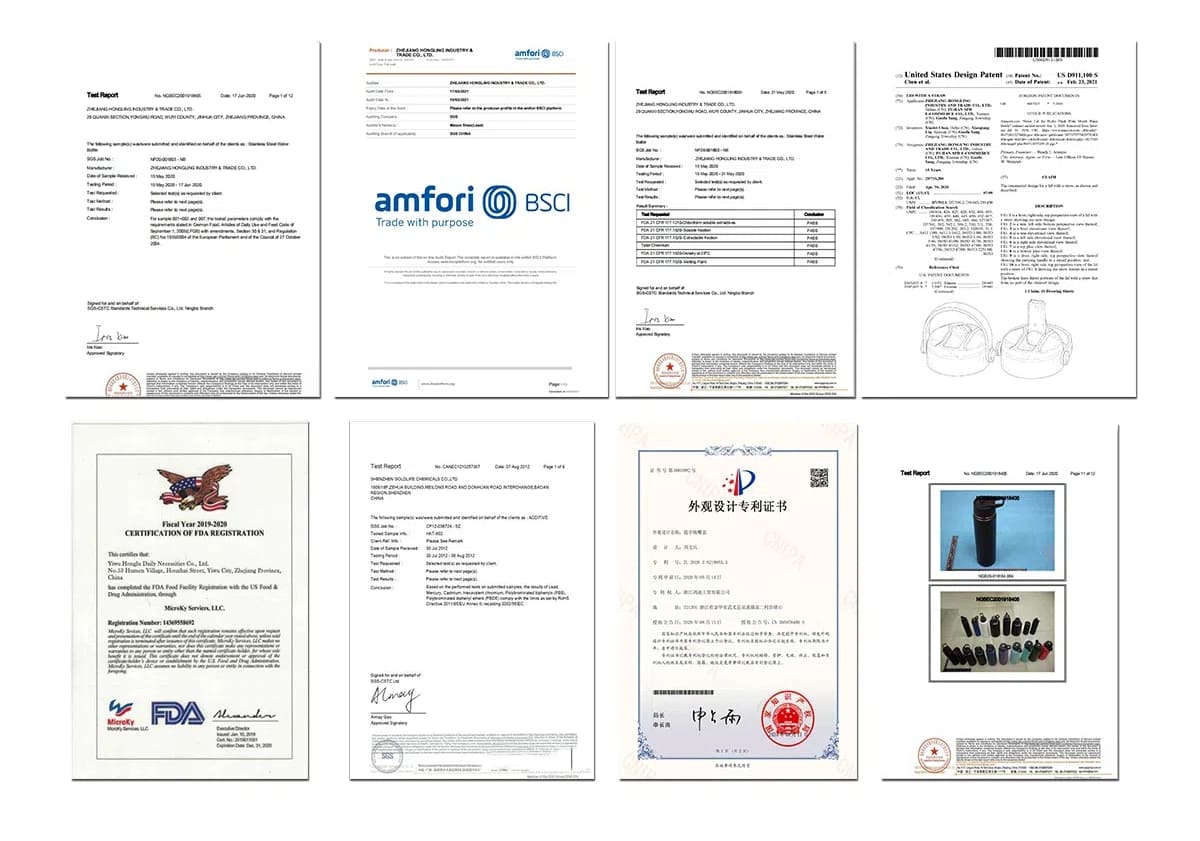
Manufacturers must ensure that stainless steel water bottles comply with various regulations and certifications to guarantee their safety, durability, and environmental responsibility. Here are the most important standards that govern these products:
1) FDA (Food and Drug Administration) Regulations5
- The FDA regulates materials used in food and beverage containers, including stainless steel water bottles. It ensures that all materials in contact with food are safe and free from harmful substances, such as Bisphenol A (BPA). Compliance with FDA standards is essential for manufacturers to guarantee their products are safe for consumer use.
2) LFGB6 (Lebensmittel- und Futtermittelgesetzbuch) Certification
- This German regulation focuses on food safety and applies to materials that come into contact with food. LFGB certification ensures that stainless steel bottles meet stringent safety criteria, including limits on substance migration into food. Products sold in the European market often require this certification to ensure compliance with EU regulations.
3) ISO Standards
- The International Organization for Standardization (ISO) has established several relevant standards:
- ISO 90017: Focuses on quality management systems, ensuring manufacturers maintain consistent quality in their processes.
- ISO 220008: Addresses food safety management systems, which is critical for products intended for food and beverage use.
- ISO 140019: Pertains to environmental management, ensuring sustainable practices in manufacturing.
- Many manufacturers seek BPA-free certification to assure consumers that their stainless steel bottles do not contain harmful chemicals associated with plastics. This certification is often provided by third-party organizations and is essential for addressing health concerns related to chemical exposure.
5) Comparison of the Standards
| Standard | Region | Purpose |
|---|---|---|
| FDA | USA | Ensures materials are food-safe. |
| LFGB | Europe | Regulates food contact materials. |
| ISO 9001 | Global | Ensures quality management. |
| BPA-Free Certification | Global | Confirms absence of harmful chemicals. |
11. What Defines a High-Quality Stainless Steel Bottle?
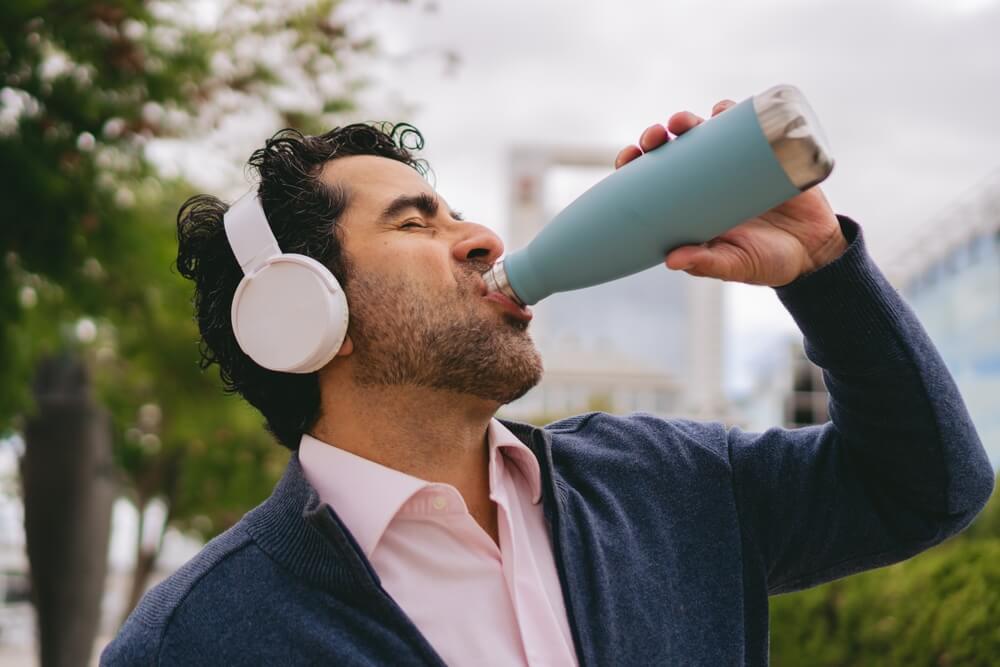
🔹 304/316 stainless steel construction for durability & safety.
🔹 Precision deep drawing & welding for leak-proof design.
🔹 Vacuum insulation technology for superior temperature retention.
🔹 Certified for food safety (FDA, LFGB, ISO).
By following these best manufacturing practices, brands can ensure their stainless steel bottles meet the highest industry standards—offering customers a durable, eco-friendly, and high-performing product. 🚀
At SiBottle, we continuously optimize our manufacturing processes to deliver durable, eco-friendly, and high-performance stainless steel water bottles for global markets. 🚀
if you need to custom manufacture stainless steel water bottles, please feel free to contact us, we will do our best to help.
IV. Technology and Innovation
The stainless steel water bottle industry is rapidly evolving, driven by advancements in automation, smart manufacturing, new materials, and functional innovations.
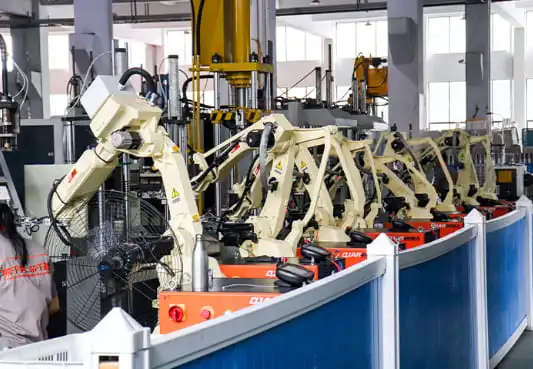
By 2025, these developments will redefine production efficiency, product durability, and user experience. This section explores key technological trends shaping the future of stainless steel water bottles.
1. Automation and Smart Manufacturing
Manufacturing plants are increasingly integrating automation and smart technologies to enhance efficiency, reduce costs, and improve product quality. Key innovations include:
AI-Driven Smart Factories
- Predictive Analytics: AI-powered systems analyze production data in real-time to optimize workflow, predict potential issues, and prevent defects before they occur.
- Automated Quality Inspection: AI-driven cameras and sensors identify surface defects, weld inconsistencies, and dimensional inaccuracies, ensuring higher product quality.
- Process Optimization: Machine learning algorithms adjust production parameters dynamically, reducing material waste and improving efficiency.
Industrial Internet of Things (IIoT)
- Connected Production Lines: Sensors track machine performance, identify bottlenecks, and schedule predictive maintenance, minimizing downtime and reducing unexpected failures.
- Real-Time Monitoring: IIoT networks collect and analyze data across production facilities, allowing for instant adjustments to improve productivity.
Advanced Robotics and Automated Welding
- Robotic Welding: AI-powered robotic arms perform precise, high-speed welding, reducing inconsistencies and improving product strength.
- Automated Handling: Robots assist in material movement, reducing labor costs and increasing operational efficiency.
Impact on Cost and Quality
- Lower Operating Costs: Automation reduces labor expenses and material waste.
- Faster Production: 24/7 manufacturing operations improve output without sacrificing quality.
- Consistent Product Standards: Automated inspection systems eliminate human error, ensuring higher reliability.
2. New Materials and Coatings
Material innovation is critical for enhancing durability, insulation, and aesthetics. Emerging trends include:
Next-Generation Stainless Steel Alloys
- Low-Carbon Stainless Steel: Offers better corrosion resistance and environmental sustainability.
- Enhanced 316 Stainless Steel: Provides superior durability for extreme conditions, such as outdoor and marine applications.
Nanomaterial Enhancements
- Anti-Corrosion Coatings: Nano-infused layers improve rust resistance and longevity.
- Antimicrobial Surfaces: Silver and copper nanoparticles create self-cleaning bottle interiors, reducing bacteria growth.
Eco-Friendly and High-Performance Coatings
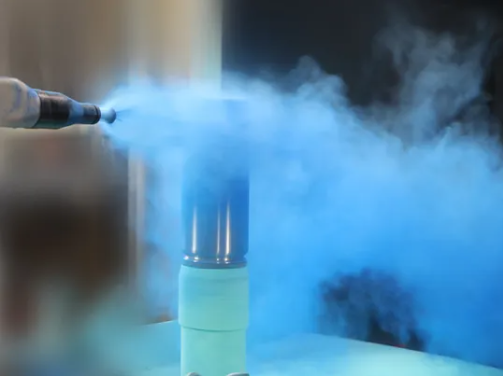
- Powder Coating: Enhances durability while offering vibrant colors and a scratch-resistant surface.
- Reflective Coatings: Inner coatings improve thermal insulation by minimizing heat loss.
- Smart Coatings: Temperature-sensitive coatings change color based on beverage temperature.
Balancing Safety and Performance
- All coatings must comply with FDA, LFGB, and EU safety regulations.
- Advanced testing ensures long-term durability without compromising food safety.
3. Functional Innovations and Smart Features
User preferences are shifting toward multi-functional and tech-integrated designs. The next generation of stainless steel bottles will feature:
Smart Bottles with Digital Integration
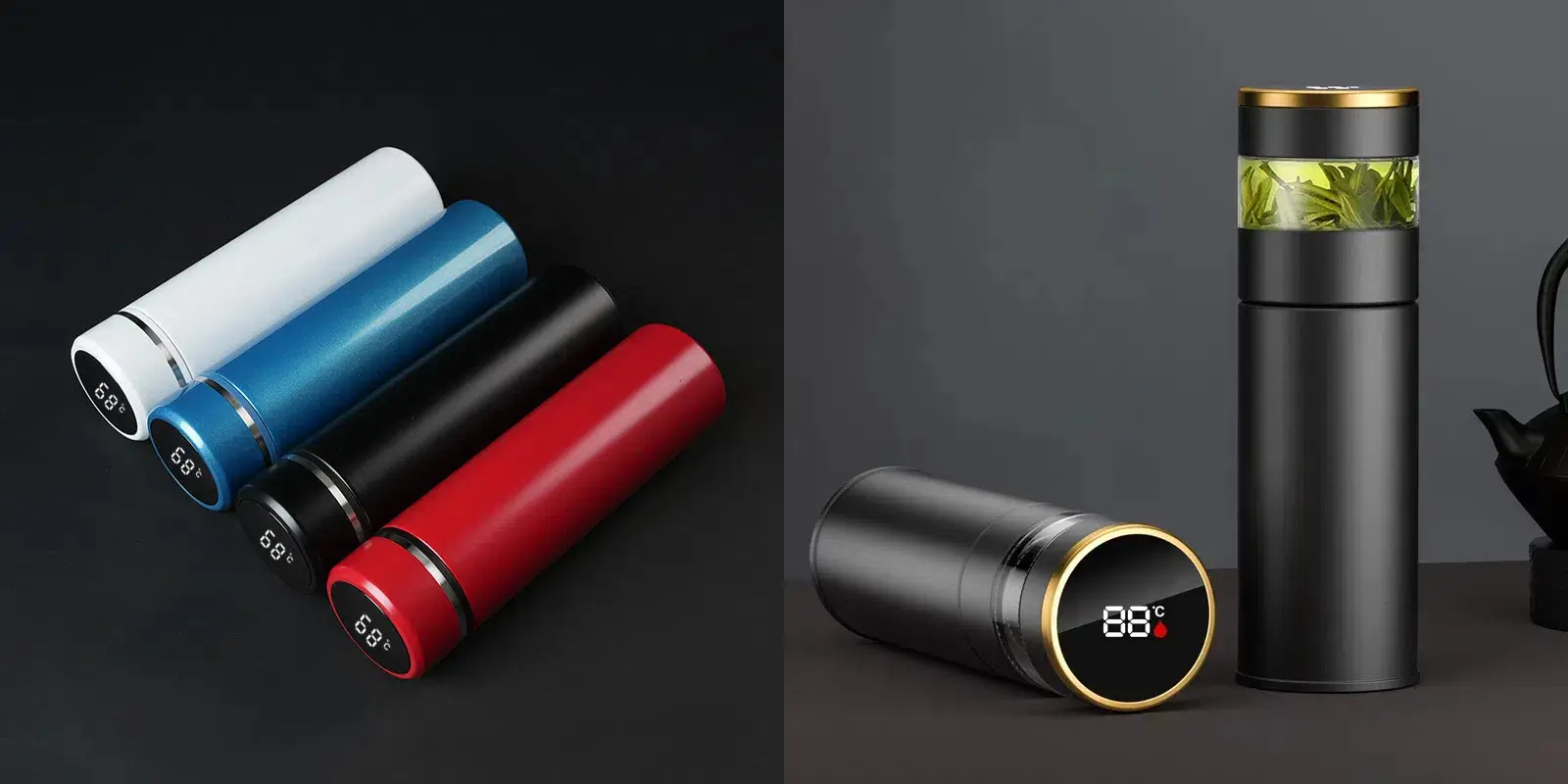
- Hydration Tracking: Bluetooth-enabled bottles sync with mobile apps to monitor water intake.
- LED Temperature Displays: Real-time temperature monitoring helps users check beverage warmth at a glance.
- Wireless Charging Lids: Some models will allow for smartphone charging via an integrated power bank.
Advanced Insulation and Filtration
- Next-Gen Vacuum Insulation: Improved double-wall technology extends heat retention up to 48 hours.
- Integrated Filtration Systems: Portable purifiers ensure safe drinking water in any environment.
Ergonomic and Multi-Use Designs
- One-Handed Operation: Push-button and flip-lid mechanisms offer convenience for users on the go.
- Built-In Storage: Compartments for supplements, tea infusers, or small essentials add functionality.
- Customizable Components: Interchangeable lids, handles, and bottle sleeves cater to different needs.
4. Next-Generation Sealing and Drinking Mechanisms
Enhanced Leak-Proof Technologies
- Automated Dispensing Caps: Touch-activated valves allow for spill-free drinking.
- Carbonation-Ready Lids: Bottles designed for sparkling water maintain internal pressure.
Innovative Drinking Methods
- Straw-Free Sipping: Redesigned nozzles optimize water flow without straws.
- Adjustable Flow Control: Users can modify water flow rate based on activity level.
The future of stainless steel water bottles is shaped by automation, smart materials, and innovative designs. Advanced manufacturing will drive efficiency and quality, while new materials will enhance durability and safety. Functional upgrades, from smart hydration tracking to next-gen insulation, will redefine user expectations. By 2025, the industry will continue to evolve, offering more personalized, sustainable, and high-performance hydration solutions.
V. Sustainability and Compliance
Sustainability is now a core requirement in stainless steel water bottle manufacturing. As global environmental awareness increases, manufacturers must adopt eco-friendly production methods, comply with international regulations, and address carbon emissions throughout the supply chain. This section explores key sustainability strategies and compliance requirements shaping the industry in 2025 and beyond.

1. Green Manufacturing and Environmental Compliance
The production of stainless steel water bottles impacts the environment in several ways. To minimize this footprint, manufacturers must address the following key areas:
Energy Consumption
Stainless steel manufacturing is energy-intensive, requiring high temperatures for melting, shaping, and treatment. While it is more energy-efficient than plastic production over its lifecycle, it still generates significant greenhouse gas (GHG) emissions if fossil fuels are the primary energy source. Recycled stainless steel reduces energy consumption by up to 70% compared to virgin material, making it a more sustainable alternative.
Water Usage and Wastewater Treatment
Water is used extensively in cooling and cleaning processes. Without proper treatment, wastewater can contain contaminants harmful to the environment. Closed-loop water recycling systems can reduce water usage by up to 90%, significantly lowering environmental impact.
Exhaust Emissions
Stainless steel production generates volatile organic compounds (VOCs), CO₂, and particulate matter, contributing to air pollution. Adopting low-emission furnaces, electrostatic precipitators, and renewable energy sources can drastically cut emissions.
Carbon Footprint Reduction
Although stainless steel water bottles reduce plastic waste, their initial production phase contributes to CO₂ emissions. Key strategies to lower the carbon footprint include:
- Switching to renewable energy sources (solar, wind, or hydrogen-based energy).
- Optimizing logistics to reduce transportation emissions.
- Using high-recycled content stainless steel to reduce raw material extraction impact.
Recycling Challenges
Stainless steel is 100% recyclable and maintains its properties indefinitely. However, proper sorting and collection systems are needed to reduce contamination and improve recycling efficiency.
2. Industry Standards and Certifications
With stricter environmental and health regulations, manufacturers must comply with international certifications to ensure product safety and sustainability. Below are the key industry standards:
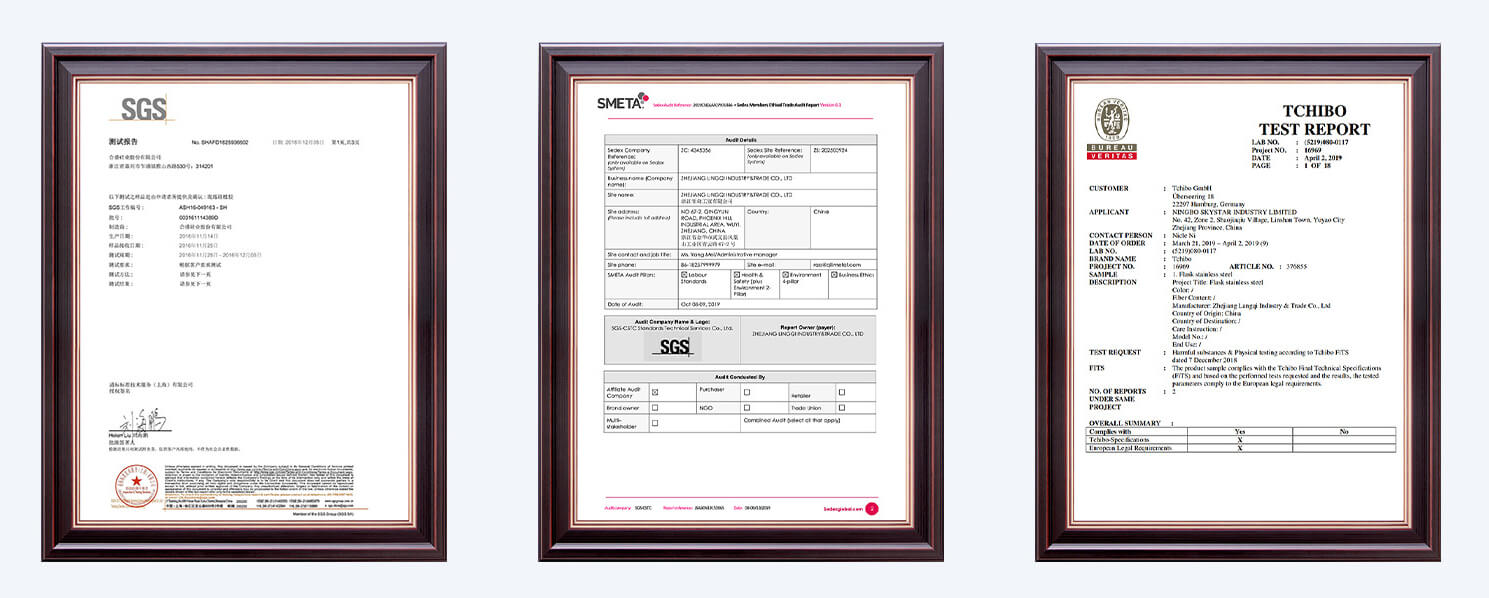
Environmental Regulations
- Single-Use Plastic Bans: Many governments are pushing for reusable alternatives. Stricter regulations will increase demand for stainless steel bottles as sustainable replacements.
- Sustainability Certifications: New certifications will require manufacturers to prove the use of recycled materials and energy-efficient production methods to remain competitive.
Health and Safety Standards
- California Proposition 65 is expected to expand globally, requiring clear labeling of products that may contain harmful substances like BPA or phthalates.
- EU Food Contact Regulations (EC No. 1935/2004) ensure that materials do not leach harmful substances into beverages.
- FDA (U.S.) & LFGB (Germany) require stainless steel bottles to meet strict food-grade material requirements, ensuring no contamination or health risks.
Smart Technology Compliance
With the rise of smart water bottles featuring tracking and monitoring functions, data privacy laws will regulate the collection and usage of consumer data. Manufacturers must ensure compliance with GDPR (Europe) and CCPA (California).
Circular Economy and Extended Producer Responsibility (EPR)
- Manufacturers will face increased pressure to implement take-back programs, making it easier for consumers to recycle old bottles.
- EPR policies will make companies responsible for their products throughout their lifecycle, from production to disposal.
3. Carbon Neutrality and Supply Chain Collaboration
How Manufacturers Can Reduce Their Carbon Footprint
1) Carbon Footprint Calculation
- Scope 1: Direct emissions from factory operations.
- Scope 2: Indirect emissions from purchased energy.
- Scope 3: Indirect emissions from raw materials, transportation, and end-of-life disposal.
2) Emission Reduction Strategies
- Switch to renewable energy (solar, wind, or hydrogen-based energy).
- Optimize transportation logistics to reduce fuel consumption.
- Enhance material efficiency by using high-recycled-content stainless steel.
Supply Chain Collaboration for Sustainability
- Supplier Engagement: Partner with suppliers who use low-emission production methods.
- Data Transparency: Establish real-time emissions tracking across the supply chain to improve sustainability reporting.
- Sustainable Sourcing: Use certified recycled materials and implement eco-friendly procurement policies.
Shared Renewable Energy Initiatives
- Companies can jointly invest in renewable energy projects, such as solar farms or green hydrogen, to power their supply chain sustainably.
Sustainability and compliance will define the next generation of stainless steel water bottles. By implementing eco-friendly manufacturing, complying with global regulations, and reducing carbon emissions, manufacturers can stay ahead of industry trends while meeting consumer demand for responsible products. The future of the industry lies in green innovation, ethical sourcing, and full lifecycle accountability.
VI. Business and Operational Strategies
Success in the stainless steel water bottle industry relies on well-structured strategies for brand positioning, customization, cost management, and logistics optimization. This section provides actionable insights to maintain competitive advantage while ensuring profitability and efficiency.
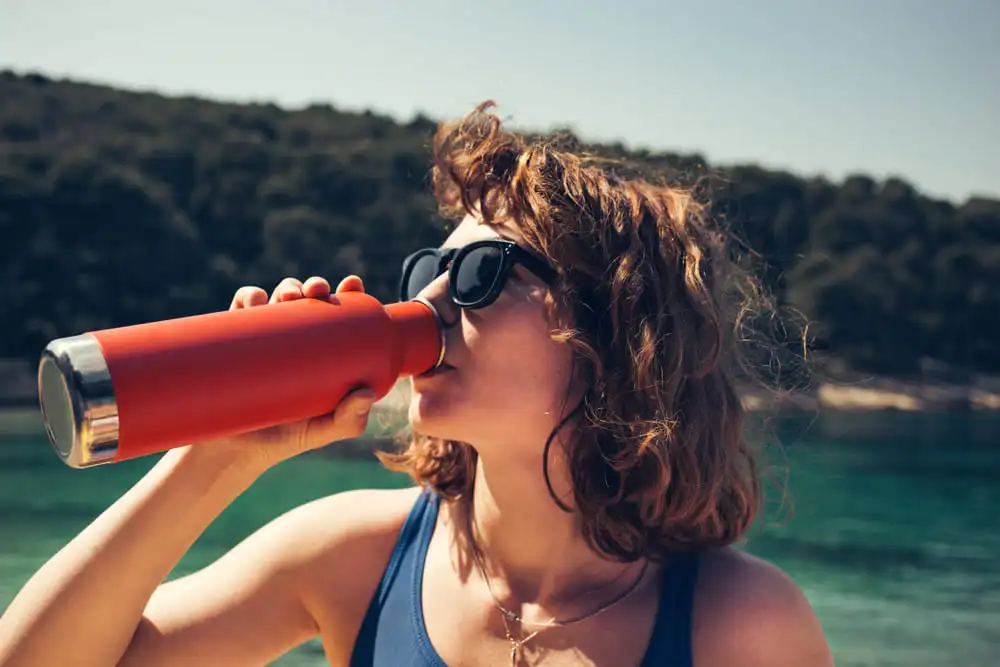
1. Brand Positioning and Differentiation
How Can Manufacturers or Brands Stand Out in a Competitive Market?
To create a distinct market presence, brands must develop clear differentiation strategies:
- Unique Selling Proposition (USP): Highlight features such as premium materials, innovative designs, or sustainability.
- Brand Consistency: Ensure uniformity across product design, packaging, and marketing.
- Market Segmentation: Offer tailored product lines for different consumer groups, such as eco-conscious buyers, outdoor enthusiasts, or corporate clients.
What Are the Differences in Design and Pricing Strategies Between Premium and Mass-Market Brands?
Premium and mass-market brands take distinct approaches to design and pricing.
| Aspect | Premium Brands | Mass-Market Brands |
|---|---|---|
| Design | Exclusive, stylish, and high-end. | Practical and functional. |
| Materials | Premium 304 or 316 stainless steel. | Standard 201 or 304 stainless steel. |
| Packaging | High-quality, luxury packaging. | Cost-effective, minimal packaging. |
| Pricing | Higher price reflecting exclusivity. | Competitive pricing for volume sales. |
How Can Online and Offline Marketing Be Effectively Combined?
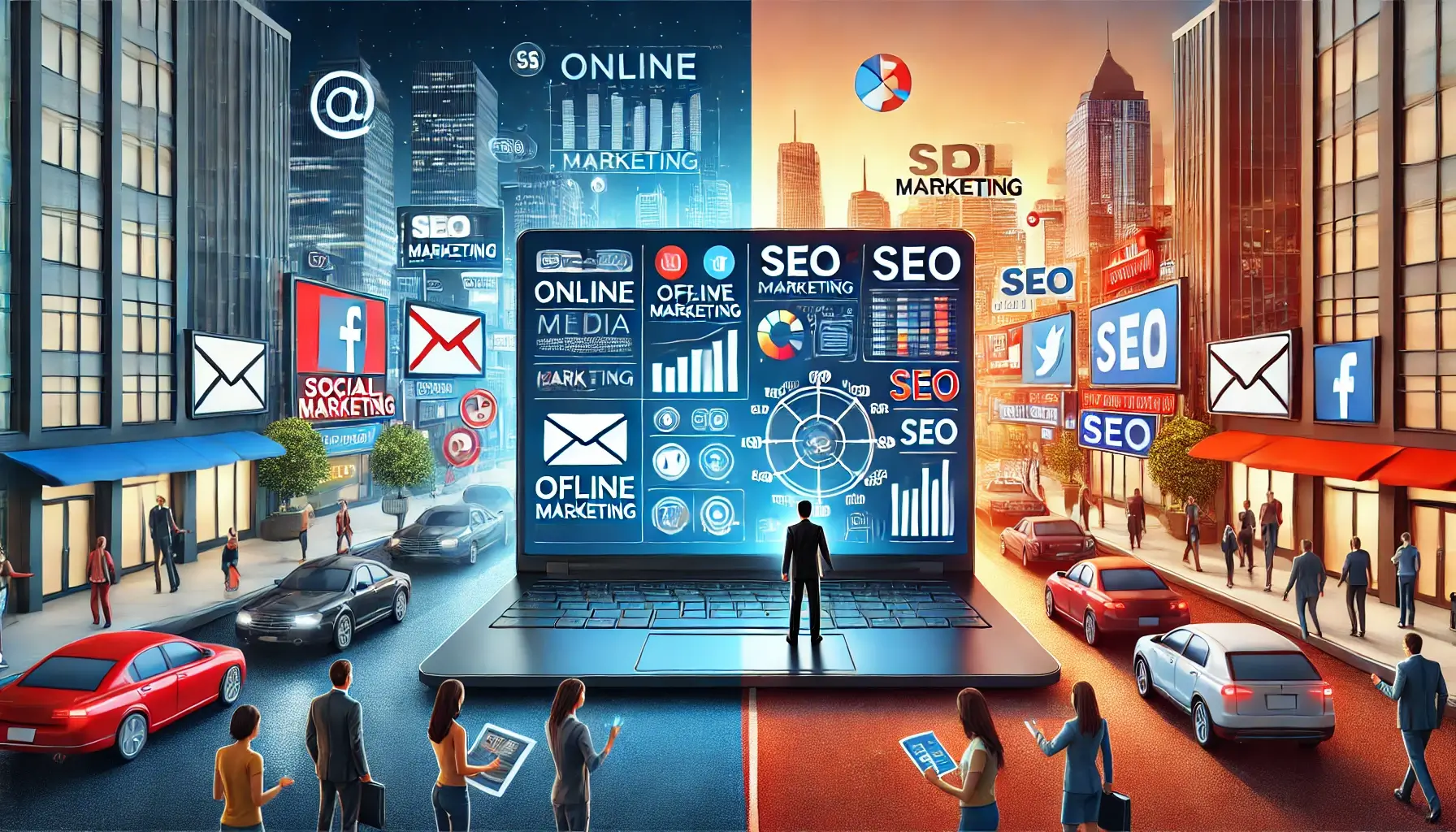
An integrated approach strengthens brand presence and customer engagement.
- Cross-Promotion: Promote online campaigns through offline channels and vice versa.
- QR Codes & Social Media Integration: Use QR codes on packaging to direct consumers to digital content.
- Data-Driven Insights: Analyze customer behavior across channels to refine marketing strategies.
Is Partnering with Influencers or KOLs in Environmental or Sports Sectors Feasible?

Yes, strategic influencer partnerships can drive brand credibility and visibility.
- Targeted Audience Reach: Collaborate with influencers whose followers align with your market.
- Authenticity & Trust: Ensure partnerships are genuine and reflect brand values.
- Engagement Campaigns: Leverage influencer-driven content, challenges, and giveaways to boost customer interaction.
How Can Social Media or Short-Video Platforms Be Used for Promotion?

Short-form videos and user-generated content (UGC) significantly increase engagement.
- Leverage Video Content: Utilize TikTok, Instagram Reels, and YouTube Shorts for product storytelling.
- Encourage UGC: Engage customers by featuring their product reviews and experiences.
- Influencer Collaborations: Partner with creators for organic brand promotion.
2. Customization Services and ODM/OEM Models
What Are the Common OEM and ODM Partnership Models in the Stainless Steel Bottle Industry?

Brands can optimize production efficiency through different partnership models.
- OEM (Original Equipment Manufacturer): Brands provide specifications, and the manufacturer produces accordingly.
- ODM (Original Design Manufacturer): The manufacturer develops the design and handles production.
- Private Labeling: Pre-designed products are customized with brand-specific elements like logos and packaging.
How Can Manufacturers Provide Rapid Prototyping and Customization Services?
Speed and flexibility in customization increase competitiveness.
- Rapid Prototyping: Use 3D printing, CNC machining, and laser engraving for fast sampling.
- Customization Variety: Offer powder coating, hydro-dipping, and custom finishes.
- Digital Approval Systems: Enable clients to review designs quickly via online platforms.
How Can Brands Customize Stainless Steel Bottles for Their Business?
- Branding Techniques: Laser engraving, UV printing, and heat-transfer printing.
- Custom Colors & Textures: Matte, glossy, or gradient coatings.
- Functional Add-ons: Interchangeable lids, silicone grips, and carrying straps.
3. What Are the Key Cost Factors in Stainless Steel Water Bottle Manufacturing?
Manufacturing a stainless steel water bottle requires a detailed understanding of cost structures that impact the final price. From raw materials to shipping, each component plays a crucial role in determining overall expenses. This chapter breaks down the essential cost factors that manufacturers and buyers need to consider.

1) How Do Raw Material Costs Affect Pricing?
The primary material for stainless steel water bottles is 18/8 (304) stainless steel, valued for its corrosion resistance, durability, and food safety. However, material costs fluctuate based on market demand, quality, and production scale.
What Is the Cost of Stainless Steel?
- Stainless steel typically costs $0.005 to $0.006 per gram.
- A standard 500ml bottle requires between 200g to 500g of stainless steel, leading to material costs ranging from $1.00 to $4.00 per bottle, depending on the steel grade and thickness.
What Additional Materials Are Required?
Other components, such as caps and seals, contribute to the total cost:
- Polypropylene Caps: ~$0.002 per gram
- Tritan (BPA-Free Plastic): ~$0.005 per gram
- Silicone Seals: ~$0.003 per gram
High-end bottles with stainless steel or bamboo lids may have higher material costs.
2) How Do Manufacturing Processes Impact Costs?
The manufacturing process involves cutting, shaping, welding, and surface treatment, all of which influence production expenses.
What Are the Cost Implications of Different Production Techniques?
-
Stamping vs. Welding:
- Stamped bottles require specialized molds but streamline production for high-volume orders.
- Welded bottles provide flexibility in design but may increase costs due to additional labor and inspection requirements.
-
Surface Finishes:
- Brushed Steel (Standard): Low cost
- Powder Coating: Adds ~$0.50–$2.00 per bottle
- Custom Textures & Special Colors: Higher cost due to complexity
What Are the Costs of Labor and Overhead?
- Labor Costs: Include wages, training, and benefits for factory workers. In China, labor costs range from $1.00 per bottle, depending on factory location and skill level.
- Overhead Costs: Energy consumption, machinery maintenance, and factory upkeep add an estimated $0.50 per bottle.
Manufacturers that automate production can reduce labor costs over time.
3) How Does Customization Affect Pricing?
Customization is a major cost driver, especially for branding, colors, and packaging.
What Are the Costs of Custom Logos and Branding?
- Silk Screen Printing: $0.20–$0.50 per bottle
- Laser Engraving: $0.50–$1.00 per bottle
- UV or Heat Transfer Printing: $0.50–$1.50 per bottle
How Much Do Special Coatings & Colors Add?
- Single Color Powder Coating: $0.50 per bottle
- Multi-Layer Coating & Gradient Colors: $1.50–$2.00 per bottle
How Much Does Custom Packaging Cost?
- Standard Box: $0.30–$0.75 per bottle
- Branded Gift Box: $0.75–$1.50 per bottle
- Eco-Friendly Packaging: Higher cost but aligns with sustainability trends
4) How Does Production Volume Influence Costs?
Why Do Bulk Orders Reduce Manufacturing Costs?
- Economies of Scale:
- 10,000-unit orders may reduce costs by 4% per bottle.
- 100,000-unit orders could see cost reductions of up to 8% due to material discounts and optimized production cycles.
For businesses planning large-scale distribution, ordering in bulk significantly improves profit margins.
5) What Are the Cost Considerations for Shipping and Logistics?
Shipping costs vary based on destination, order size, and transportation method.
How Do Freight Costs Differ by Method?
-
Sea Freight (Most Cost-Effective for Bulk Orders)
- From China to the U.S. or Europe: $0.10–$1.50 per bottle
- Larger shipments enjoy lower per-unit shipping costs.
-
Air Freight (Faster but Expensive)
- $2.00–$3.00 per bottle, depending on volume and urgency.
Choosing the right shipping strategy balances cost with delivery speed.
6) How Do Quality Control & Compliance Costs Impact Pricing?
Ensuring product quality and meeting international standards requires testing and inspections.
What Are the Costs of Quality Control?
- Leak & Insulation Testing: $0.10–$0.30 per bottle
- Material Compliance Testing (FDA, LFGB): $500–$1,500 per batch
For brands targeting North American and European markets, compliance costs are essential to avoid regulatory issues.
7) What Additional Factors Affect Manufacturing Costs?
Beyond standard production, several factors influence final pricing.
How Does Design Complexity Affect Costs?
-
Custom Molds & Tooling:
- Simple Shapes: $500–$1,000 per mold
- Intricate Designs: $3,000+ per mold
-
Unique Bottle Features:
- Handles, Spouts, Built-In Straws: $0.50–$2.00 additional cost
- Double-Walled & Vacuum Insulated Designs: More materials, increasing cost per unit
8) What Is the Estimated Total Cost to Manufacture a Stainless Steel Water Bottle?
By evaluating raw materials, production processes, customization, shipping, and compliance, the total manufacturing cost of a stainless steel water bottle typically falls between:
✅ Basic Model: $1.5–$5.00 per unit
✅ Custom Model with Branding: $2.00–$18.00 per unit
✅ High-end Premium Bottles: $4.00–$20.00 per unit
These estimates vary based on design complexity, volume, and customization level.
9) How Can You Optimize Costs Without Sacrificing Quality?
What Strategies Can Reduce Manufacturing Expenses?
✅ Order in Bulk to leverage supplier discounts
✅ Optimize Production Processes to reduce material waste
✅ Choose Cost-Effective Customization Methods
✅ Balance Sea vs. Air Freight for Efficient Shipping
✅ Invest in Quality Control Early to prevent defects and returns
10) Final Thoughts: How to Manage Costs While Maintaining Quality?
Understanding the cost structure of stainless steel water bottle manufacturing helps businesses strategize pricing, optimize production, and maximize profitability.
By carefully analyzing material costs, production efficiencies, and customization options, brands can find the right balance between cost control and premium product offerings.
4. Packaging and Shipping
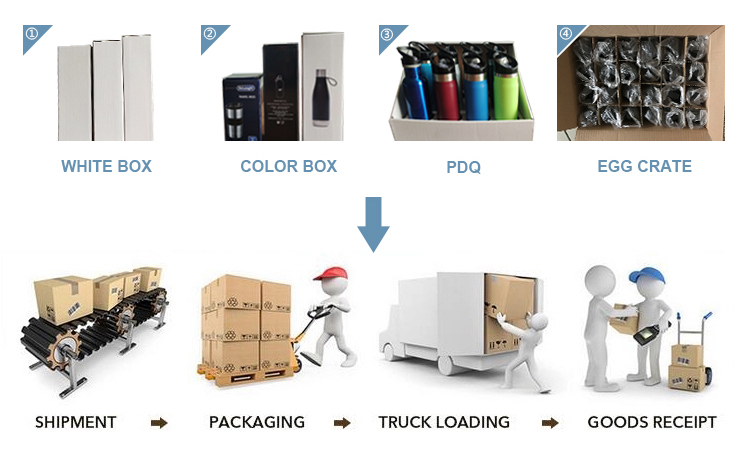
How Can Proper Packaging Prevent Damage or Scratches During Shipping or Storage?
Effective packaging enhances product safety and customer satisfaction.
- Durable Packaging Materials:
- Corrugated Cardboard Boxes: Prevent crushing and pressure damage.
- Padded Mailers: Ideal for single-bottle shipments.
- Cushioning & Internal Protection:
- Bubble Wrap & Foam Inserts: Minimize movement and impact.
- Packing Fillers: Air pillows or crumpled paper reduce shifting.
- Moisture Protection:
- Water-Resistant Packaging: Protects against humidity and spills.
What Factors Should Be Considered When Choosing Between Sea Freight, Air Freight, or Other Shipping Options?
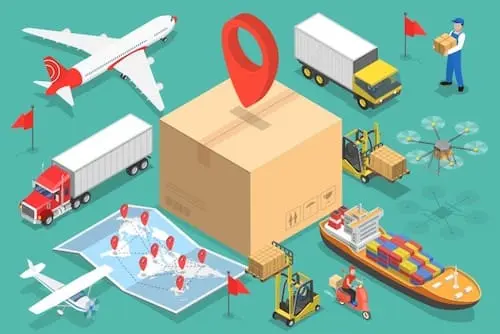
Choosing the right shipping method balances cost, speed, and security.
| Shipping Method | Cost | Delivery Time | Best For |
|---|---|---|---|
| Sea Freight | Lower | 3–10 weeks | Bulk orders, cost efficiency. |
| Air Freight | Higher | 3–7 days | Urgent shipments, high-value goods. |
| Rail Freight | Medium | 2–4 weeks | Regional, eco-friendly transport. |
- Reliability & Security: Air freight has higher security standards but is costlier.
- Sustainability Considerations: Sea freight has a lower carbon footprint per ton.
How to Optimize Packaging Design and Logistics to Enhance Customer Experience?
- Compact, Secure Packaging: Reduce shipping costs by eliminating excess space.
- Eco-Friendly Design: Use biodegradable or recyclable materials.
- Interactive Packaging: Incorporate QR codes for post-purchase engagement.
- Logistics Efficiency:
- Real-Time Order Tracking: Improves transparency and reduces customer uncertainty.
- Multiple Shipping Options: Offer express and economy shipping to cater to different needs.
By strategically positioning the brand, optimizing customization services, managing production costs, and improving logistics, businesses can thrive in the competitive stainless steel water bottle industry. Combining digital marketing, influencer partnerships, and sustainability efforts further strengthens brand appeal. A data-driven approach to pricing and cost control ensures long-term profitability while maintaining high product standards.
VII. Practical Case Studies
Studying real-world case studies provides valuable insights into how successful brands and manufacturers leverage design, marketing, and operational strategies to excel in the stainless steel water bottle industry. This section explores leading brand strategies and comparative analysis of manufacturing approaches to highlight key lessons for businesses.
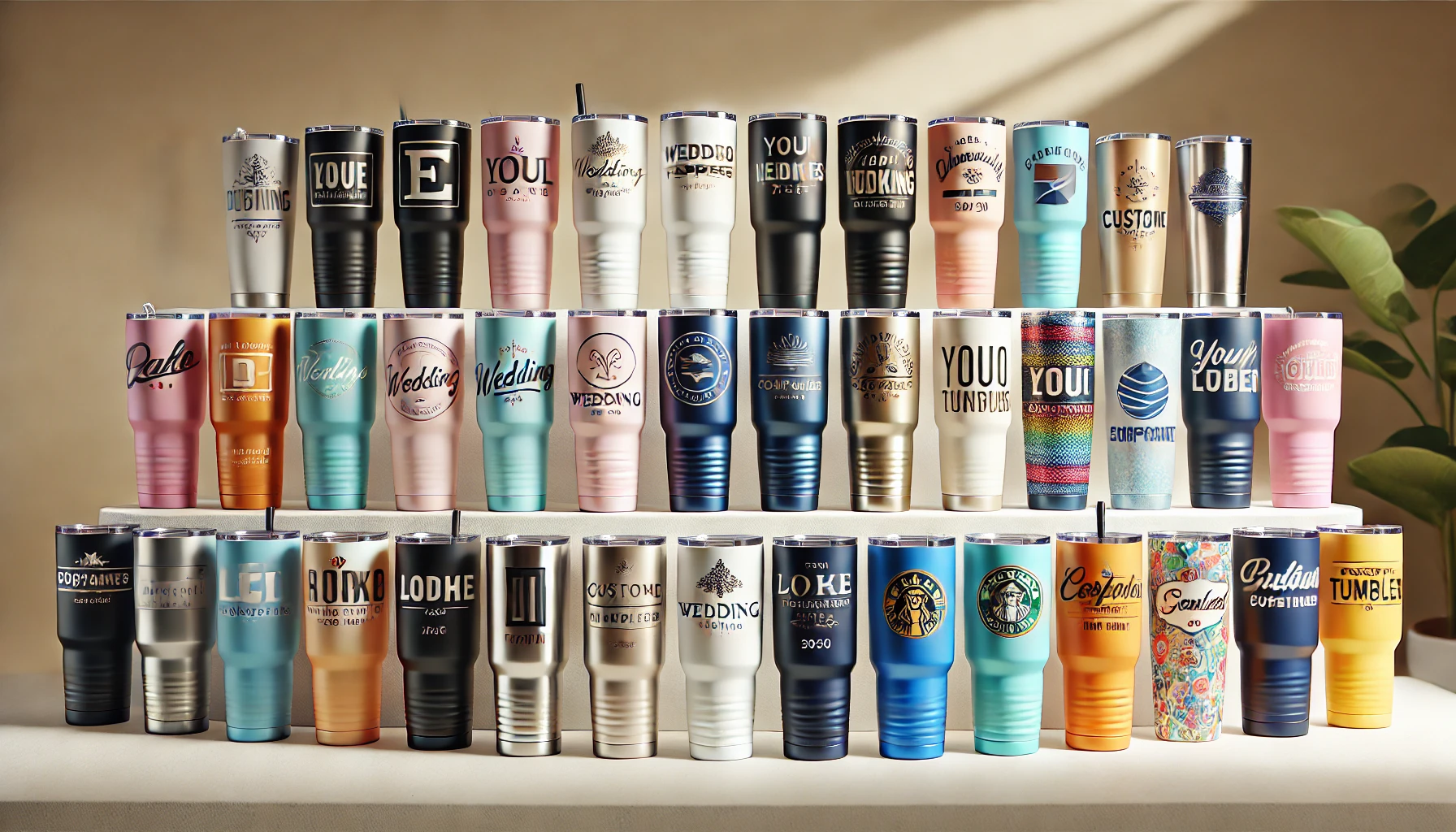
1. Successful Brand Case Studies
What Are Some Notable Stainless Steel Water Bottle Brands in Design and Marketing?
Several well-known brands stand out for their innovative approaches to technology, quality, and promotion. These brands have successfully differentiated themselves by focusing on functionality, sustainability, and lifestyle alignment.
Hydro Flask
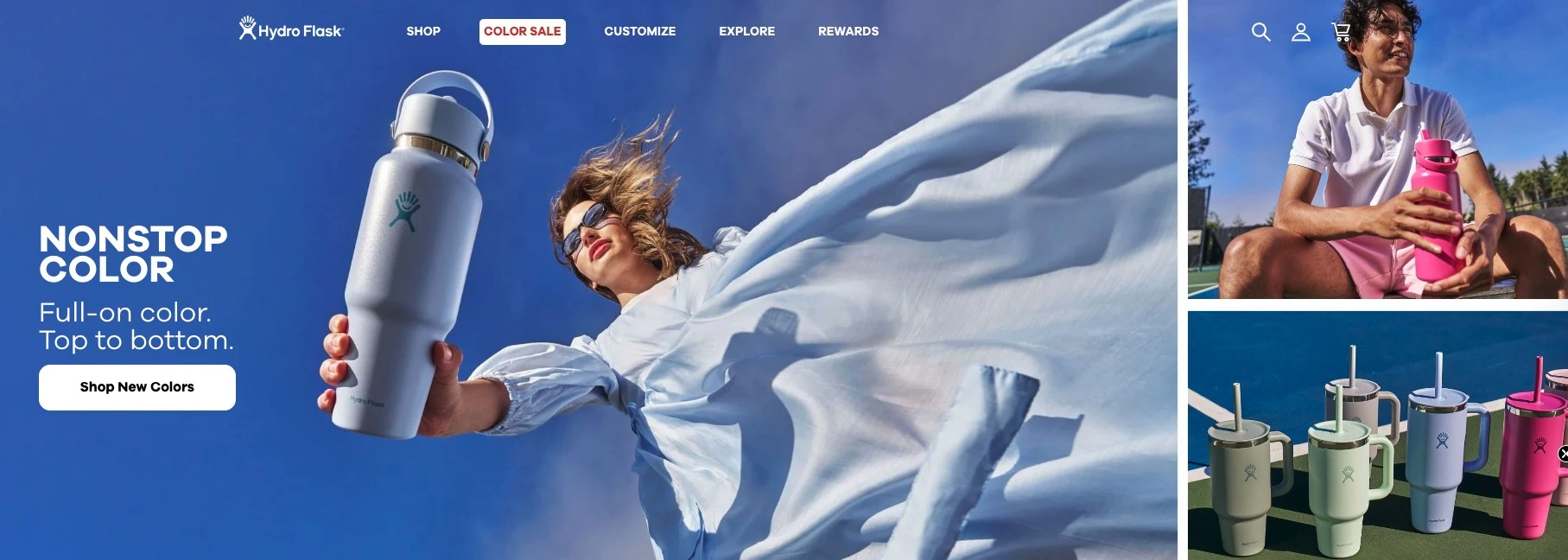
- Design: Hydro Flask is known for its double-wall vacuum insulation, ensuring superior temperature retention. The durable powder-coated finish enhances grip and aesthetics, while the wide mouth design allows easy filling and cleaning.
- Marketing: The brand's strategy revolves around an outdoor adventure theme. Social media campaigns encourage user-generated content with hashtags like #HydroFlask, positioning the brand as essential gear for active lifestyles.
YETI
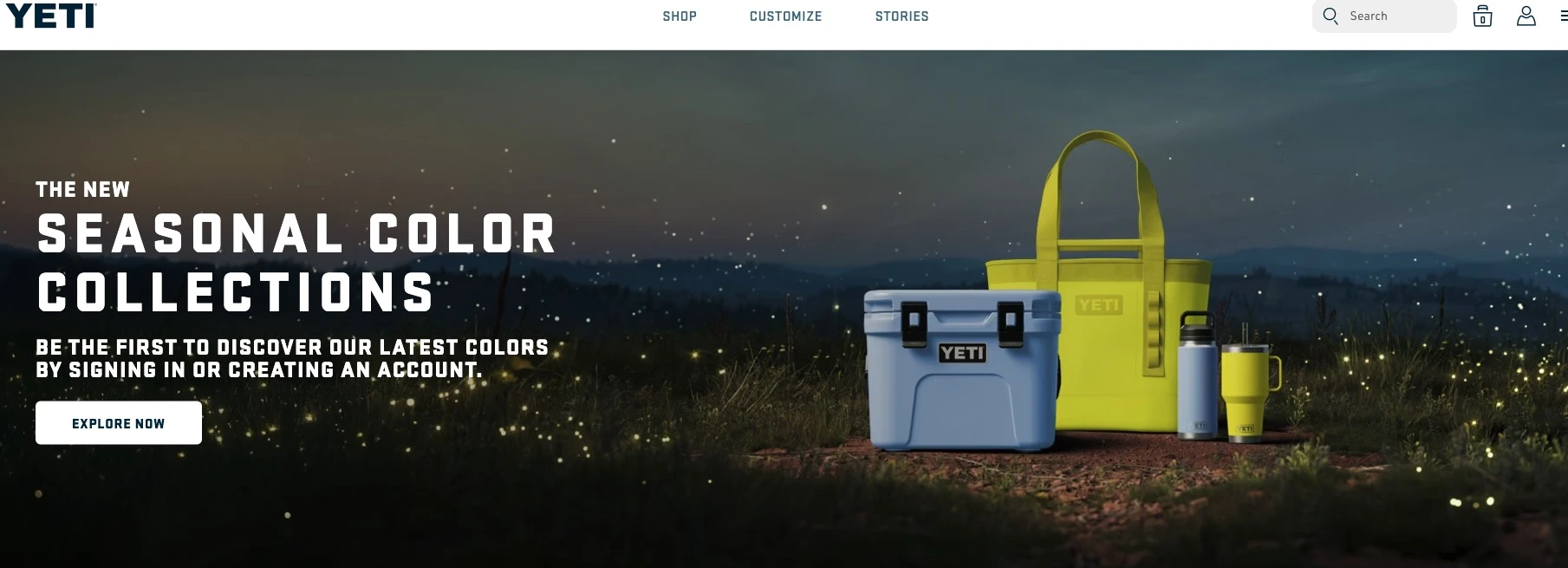
- Design: YETI bottles are designed for rugged use, featuring impact-resistant stainless steel and a chug cap for quick hydration.
- Marketing: YETI’s storytelling approach focuses on durability and adventure, with influencer collaborations and sponsorships in the outdoor community reinforcing its premium, high-performance image.
Stanley
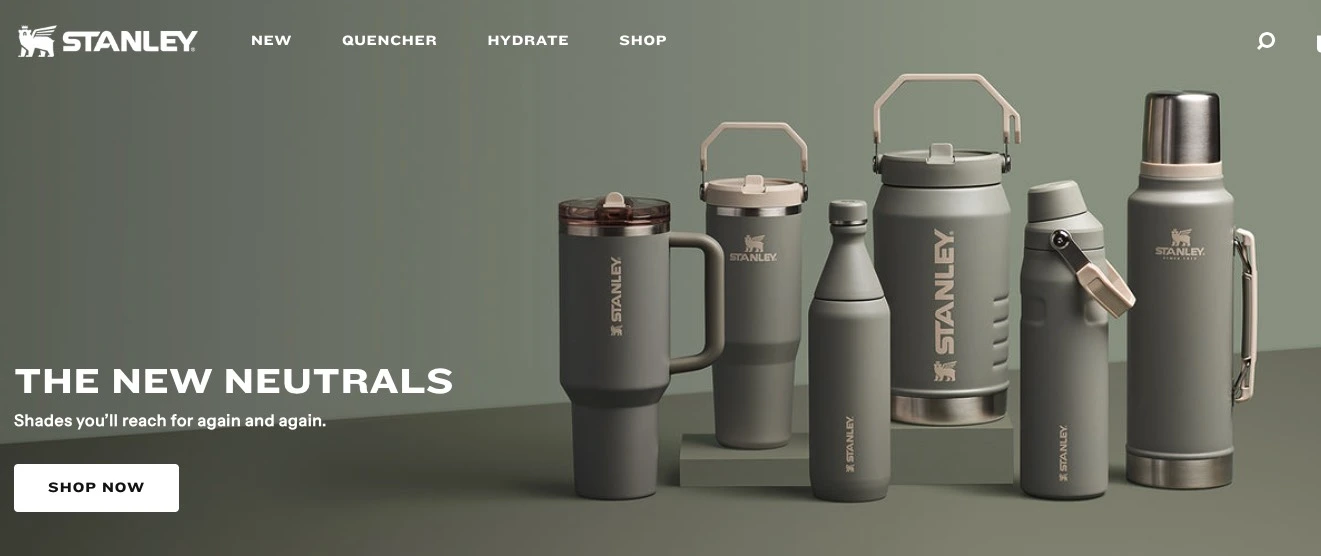
- Design: Stanley bottles feature a timeless, practical design with heavy-duty construction. The variety of sizes and styles cater to different consumer needs while maintaining a strong focus on durability.
- Marketing: The brand emphasizes sustainability and heritage, leveraging traditional advertising and digital campaigns that highlight product longevity and reliability.
Klean Kanteen
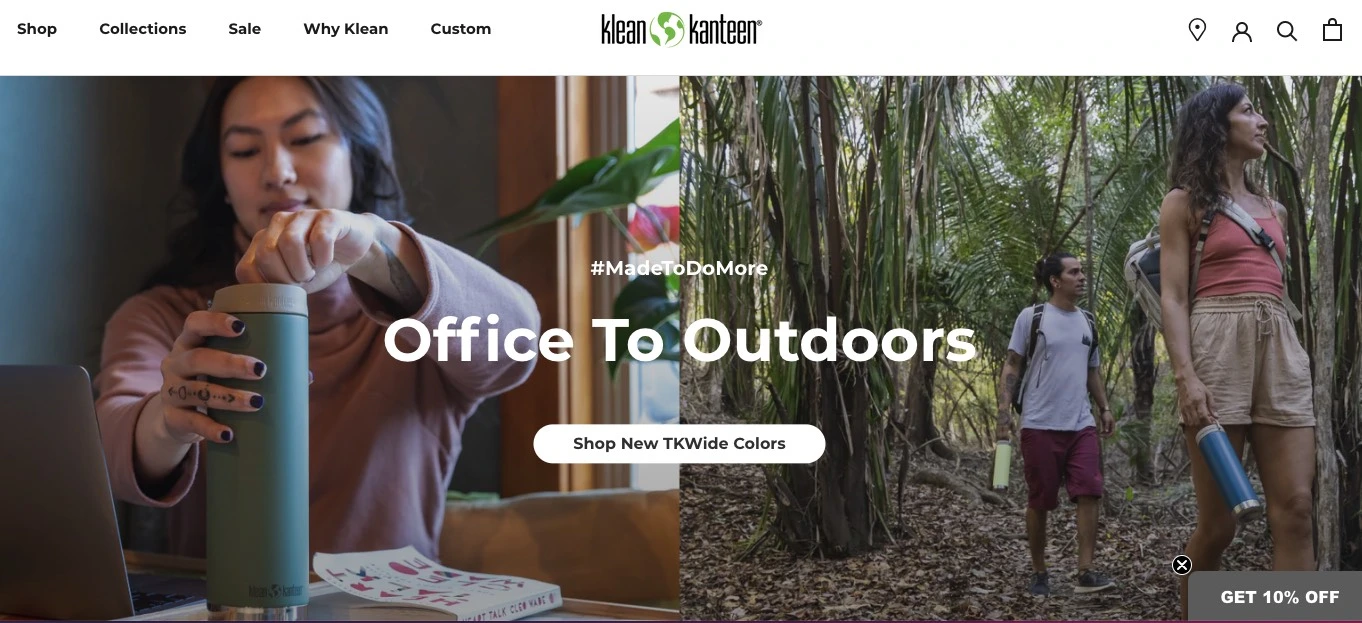
- Design: The brand prioritizes eco-friendly materials and customizable lids for versatility.
- Marketing: Klean Kanteen is heavily involved in sustainability initiatives, actively partnering with environmental organizations to advocate for reducing single-use plastics.
CamelBak
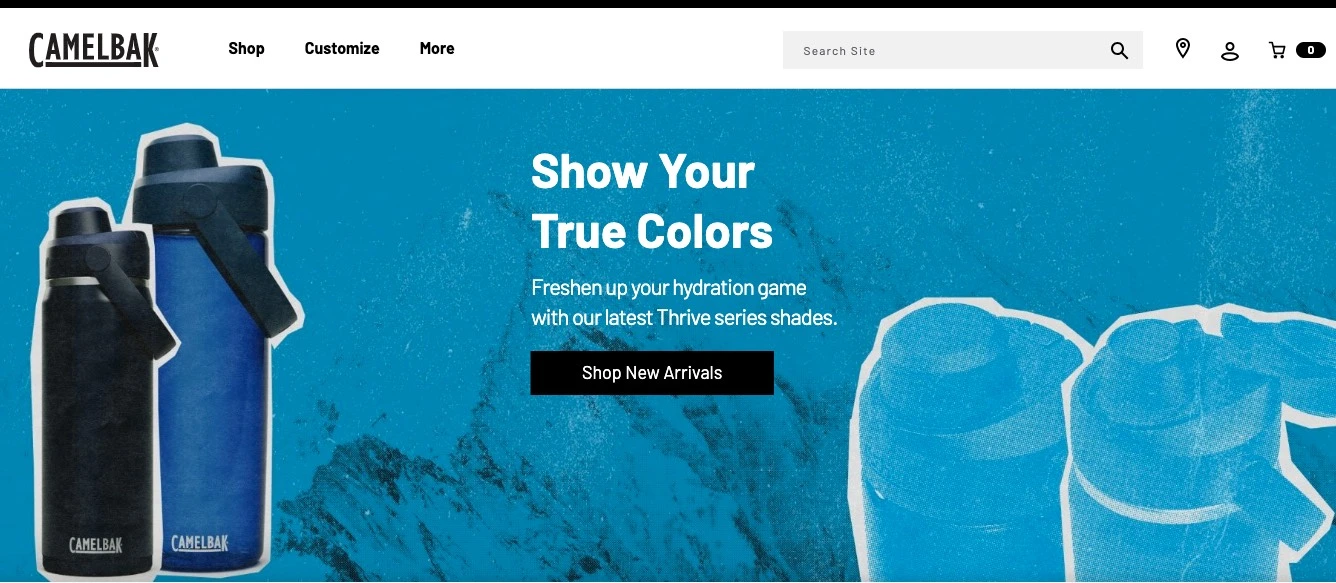
- Design: Designed for sports and outdoor enthusiasts, CamelBak bottles incorporate ergonomic shapes and built-in straws for easy drinking.
- Marketing: The brand focuses on hydration for active lifestyles, engaging through social media and collaborating with athletes and outdoor influencers.
Owala
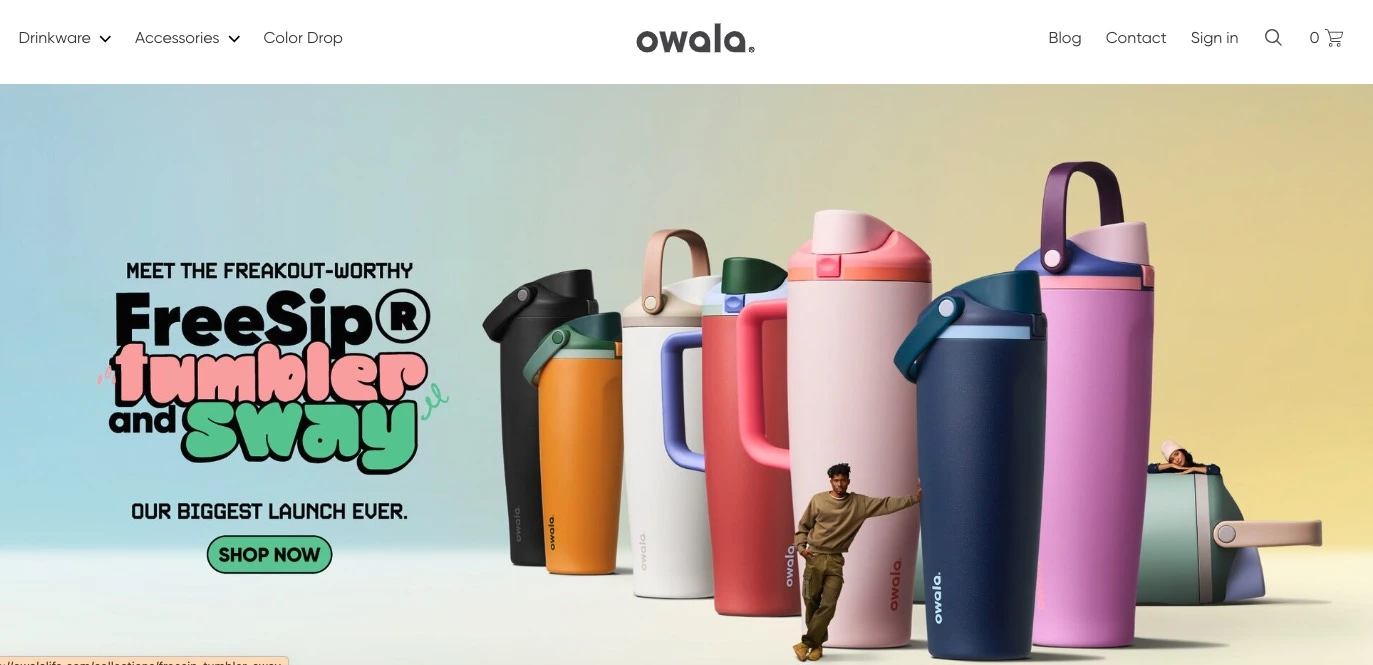
- Design: Owala bottles stand out with their FreeSip lid, allowing users to sip from a straw or chug from a wide mouth.
- Marketing: The brand uses vibrant, playful branding with social media challenges and interactive content to appeal to younger demographics.
These brands—Hydro Flask, YETI, Stanley, Klean Kanteen, CamelBak, and Owala—demonstrate the power of strong branding, innovative design, and effective marketing. Whether through sustainability, durability, or lifestyle positioning, each brand has built a distinct identity that resonates with its target audience.
2. Manufacturer Case Studies
How Do Small-Scale and Large-Scale Automated Factories Compare?
The choice between small-scale flexible manufacturing and large-scale automated production significantly impacts cost, efficiency, and scalability. Below is a comparison of their advantages and challenges.
Advantages of Small-Scale Automated Factories
-
Flexibility & Adaptability
- Can quickly adjust production based on market demand.
- Ideal for niche markets and specialized customization.
-
Lower Initial Investment
- Less capital-intensive compared to large-scale factories.
- Suitable for startups and boutique brands testing the market.
-
Faster Ramp-Up Time
- Easier setup and deployment allow for quick production starts.
-
Higher Product Quality Control
- Smaller batch production enables better quality monitoring.
-
Reduced Overhead Costs
- Requires fewer employees and lower utility expenses.
Challenges of Small-Scale Factories
-
Limited Production Capacity
- Cannot easily scale for high-volume orders.
-
Higher Per-Unit Costs
- Lack of economies of scale leads to higher manufacturing costs per unit.
-
Resource Constraints
- Limited access to advanced automation technologies.
Advantages of Large-Scale Automated Factories
-
Increased Efficiency & Productivity
- High automation ensures continuous, large-volume production.
- Essential for mass-market brands with global distribution.
-
Lower Per-Unit Costs
- Bulk purchasing and automation reduce production costs.
-
Integration of Advanced Technologies
- AI, robotics, and smart factory systems improve efficiency.
-
Optimized Supply Chain & Logistics
- Large manufacturers benefit from better supplier relationships and streamlined logistics.
Challenges of Large-Scale Factories
-
High Initial Investment
- Significant capital required for machinery, infrastructure, and automation systems.
-
Reduced Flexibility
- Factories are optimized for specific product lines, making quick adjustments difficult.
-
Maintenance & Downtime Risks
- Complex automated systems require costly maintenance.
-
Workforce Reduction Concerns
- Increased automation can lead to job displacement.
Both small-scale and large-scale automated factories offer distinct benefits and trade-offs:
- Small-Scale Factories excel in customization, flexibility, and quality control but may struggle with capacity and cost efficiency.
- Large-Scale Factories provide cost-effective, high-speed production with advanced technology, though they require higher investment and are less adaptable.
For businesses entering the market, choosing the right manufacturing model depends on brand positioning, target audience, and scalability goals.
By leveraging insights from successful brands and efficient manufacturing models, companies can optimize production, enhance brand identity, and stay competitive in the stainless steel water bottle industry.
VIII. Future Outlook & Conclusion
The stainless steel water bottle industry is poised for significant evolution in the coming years, driven by advances in technology, sustainability demands, and shifting consumer expectations. Below, we examine potential disruptive innovations, the evolving role of sustainability, and the opportunities and challenges facing manufacturers globally.

1. Technological Upgrades & Iterations
What Disruptive Technologies Will Shape the Industry After 2025?
After 2025, several disruptive technologies are likely to shape the manufacturing of stainless steel water bottles, particularly in automation, sustainability, and consumer-driven innovation.
1.1 Advanced Robotics & Automation
- Increased Use of Industrial Robots: Robotic automation will enhance precision, speed, and cost-efficiency in key production processes such as welding, polishing, and quality control.
- Collaborative Robots (Cobots): Cobots will work alongside human workers, improving flexibility in manufacturing and maintaining high-quality production standards.
1.2 Smart Manufacturing Technologies
- IoT Integration: The Internet of Things (IoT) will enable real-time tracking of production efficiency, machine performance, and predictive maintenance, reducing downtime and operational costs.
- AI-Driven Data Analytics: AI-powered predictive analytics will optimize supply chain logistics, production schedules, and inventory management, allowing manufacturers to adapt quickly to market trends.
1.3 Additive Manufacturing (3D Printing)
- Customization Capabilities: 3D printing will allow for personalized bottle designs, catering to niche markets with intricate, consumer-specific preferences.
- Rapid Prototyping: This technology will enable faster product development, reducing time-to-market for new models and innovations.
1.4 Sustainable Materials & Circular Economy
- Recycled Stainless Steel: Manufacturers will increase the use of recycled stainless steel, reducing reliance on virgin materials and minimizing carbon footprints.
- Circular Economy Models: More brands will implement take-back programs, repairable designs, and fully recyclable products, creating closed-loop sustainability systems.
1.5 Insulation & Smart Bottle Innovations
- Enhanced Vacuum Insulation: New insulation techniques will improve thermal performance while reducing material usage, leading to lighter yet more efficient bottles.
- Smart Insulation Features: Future bottles may integrate temperature sensors, hydration tracking, and Bluetooth connectivity to enhance the user experience.
1.6 Digital Transformation in Marketing
- Augmented Reality (AR) for E-Commerce: Brands may utilize AR to allow consumers to preview custom designs before purchase.
- AI-Powered Product Recommendations: AI-driven analytics will personalize shopping experiences, suggesting tailored options based on consumer behavior.
The stainless steel water bottle industry will undergo significant transformations after 2025, fueled by technological advancements such as advanced robotics, smart manufacturing, and sustainability-driven materials. These innovations will enhance production efficiency, improve user experience, and create a more eco-conscious industry.
2. Sustainability & Social Responsibility
How Will Stricter Environmental & Social Responsibility Regulations Impact the Industry?

As global environmental regulations tighten and corporate social responsibility (CSR) expectations rise, manufacturers must adopt sustainable practices to maintain competitiveness.
2.1 Sustainable Sourcing & Production
- Ethical Material Sourcing: Manufacturers will prioritize responsibly sourced stainless steel, ensuring compliance with Environmental, Social, and Governance (ESG) criteria.
- Circular Economy Strategies: The industry will see wider adoption of recycling programs, waste reduction initiatives, and energy-efficient manufacturing to meet low-carbon goals.
2.2 Emissions Reduction & Energy Efficiency
- Lower Carbon Footprint: Factories will transition to renewable energy sources and invest in carbon capture technologies to minimize emissions.
- Eco-Friendly Manufacturing: More companies will implement low-waste production techniques and use non-toxic coatings and adhesives to ensure environmental safety.
2.3 Corporate Social Responsibility (CSR) & Consumer Expectations
- Greater Transparency: Brands will publicly disclose sustainability efforts, including carbon footprints, supply chain transparency, and ethical labor practices.
- Consumer Education & Engagement: Companies will educate consumers on eco-conscious choices, encouraging sustainable purchasing habits.
2.4 Regulatory Compliance & ESG Standards
- Stricter Regulations: Governments worldwide are enforcing carbon reduction mandates, eco-labeling laws, and emissions controls.
- Investor & Consumer Pressure: Brands that fail to meet ESG criteria may lose market share, while sustainability leaders will attract ethical investors and eco-conscious customers.
The stainless steel bottle industry must rapidly integrate sustainability into sourcing, production, and branding. Companies that embrace green innovations, energy-efficient manufacturing, and responsible supply chains will gain consumer trust and long-term success.
3. Opportunities & Challenges
How Can Manufacturers Differentiate Themselves in an Increasingly Competitive Market?
With industry saturation on the rise, stainless steel water bottle brands must innovate and create unique value propositions.
3.1 Opportunities for Growth
✅ Premiumization & Customization
- Offering luxury finishes, smart features, and corporate branding options can attract premium customers.
- Customization options (engraved names, corporate logos, color variations) enhance brand differentiation.
✅ Health & Safety Positioning
- Consumers are increasingly health-conscious, preferring BPA-free, non-toxic, and antimicrobial water bottles.
- UV sterilization and filtration innovations will add appeal, especially in hygiene-focused markets.
✅ Direct-to-Consumer & E-Commerce Expansion
- Brands can leverage Amazon, Shopify, and social commerce to drive DTC (Direct-to-Consumer) sales.
- AI-driven analytics will help tailor recommendations, enhancing the shopping experience.
3.2 Challenges & How to Overcome Them
⚠ Market Saturation & Price Competition
✅ Solution: Differentiate through branding, storytelling, and premium features rather than competing on price alone.
⚠ Rising Production Costs
✅ Solution: Adopt automation & AI-driven efficiency models to optimize resource use and lower costs.
⚠ Consumer Expectations for Sustainability
✅ Solution: Implement eco-labeling, sustainable certifications, and transparent marketing campaigns.
The stainless steel water bottle industry is evolving rapidly, driven by technological advancements, sustainability pressures, and changing consumer behavior. Manufacturers and brands that embrace smart manufacturing, invest in eco-friendly practices, and prioritize customer experience will lead the future market.
Key Takeaways for Industry Leaders:
🚀 Innovate with Smart Features & Advanced Materials
♻ Commit to Sustainable Practices & Transparent ESG Reporting
📈 Leverage Direct-to-Consumer & Digital Marketing Strategies
🏆 Differentiate through Design, Branding, & Customization
By aligning with sustainability, health-conscious trends, and digital commerce, brands can thrive in the next decade of stainless steel bottle manufacturing.
Final Thoughts: How Can You Succeed in the Stainless Steel Water Bottle Industry?
The stainless steel water bottle industry is evolving rapidly, driven by technological advancements, sustainability demands, and shifting consumer preferences. To stay competitive, manufacturers and brands must focus on efficient production, material optimization, smart customization, and strategic marketing.
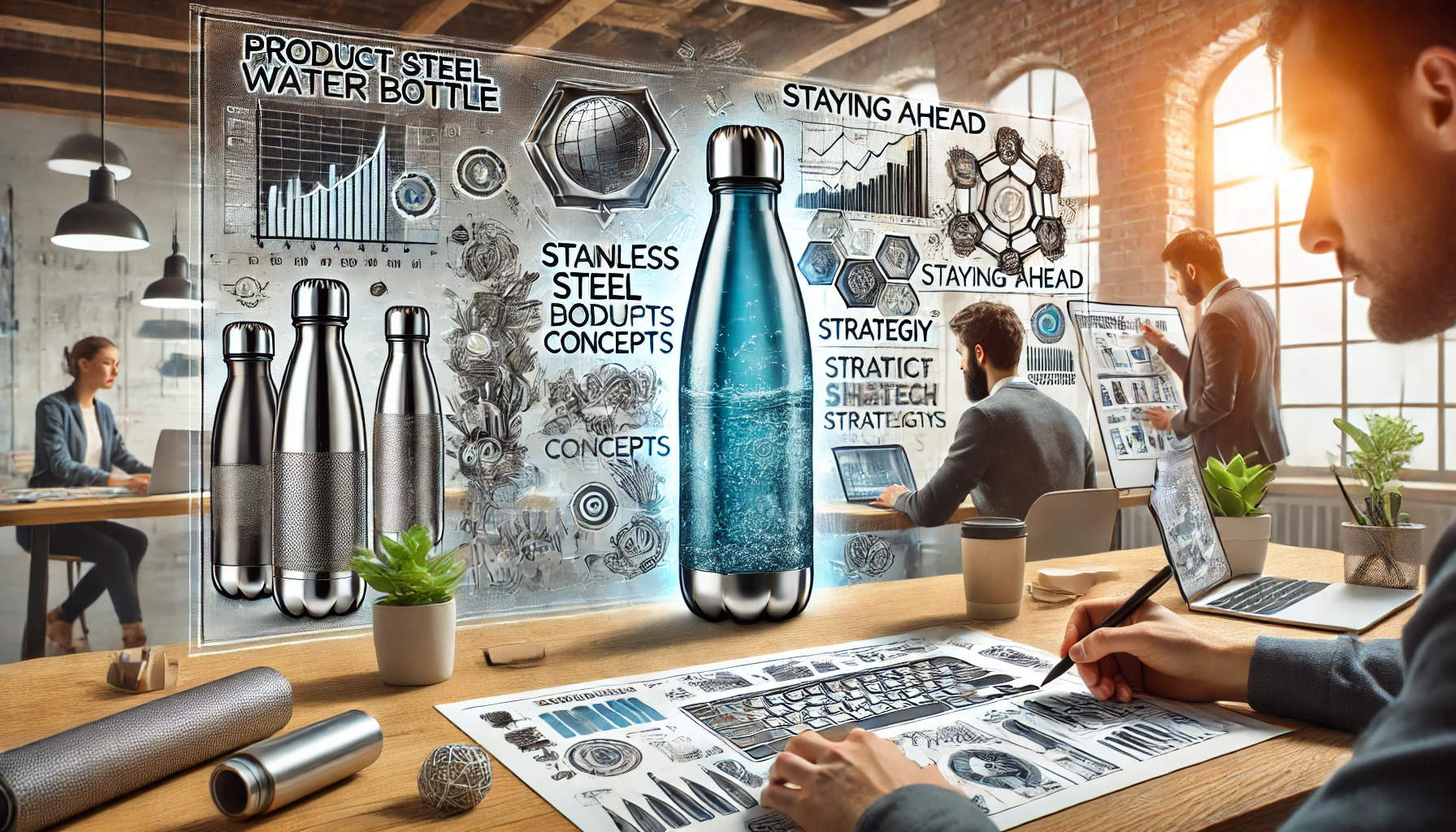
Success in this market requires a deep understanding of cost structures, quality control, and branding strategies. Investing in automation, eco-friendly materials, and innovative designs will help brands differentiate themselves in a saturated industry. Additionally, adapting to changing regulations and consumer expectations is critical for long-term growth.
By sharing the insights in this guide, we hope it can help you make informed decisions, optimize operations, and build strong, recognizable brands in the stainless steel water bottle industry. Whether you're a manufacturer, a brand owner, wholesaler or retailer of stainless steel water bottles, the key to success lies in continuous improvement, market adaptability, and customer-focused innovation.
The future of stainless steel water bottle manufacturing is full of opportunities. Are you ready to seize them?

